- Efficient and refined drivetrain
- Still a keen handler despite the extra weight
- Interior is still practical and feature packed
- Big price gap over ST-Line petrol
- Some features are still optional at this price
- The Escape hybrid would make more sense
Of the 1,089,429 cars sold in Australia in 2022, only 5,937 of them were plug-in hybrids (PHEVs) – that’s a lot less than the 18,824 electric cars sold. Although once positioned as a great way to combine electric around town driving with the ability to travel long distances away from cities like a regular ICE-powered car, it’s clear that the plug-in hybrid is yet to catch on in Australia. Perhaps that’s due to lack of choice, though there are more PHEV cars launching locally this year. We tested the only current PHEV in Ford’s lineup – the 2022 Ford Escape ST-Line Plug-In Hybrid – to see how the technology fares in a mid-sized SUV.
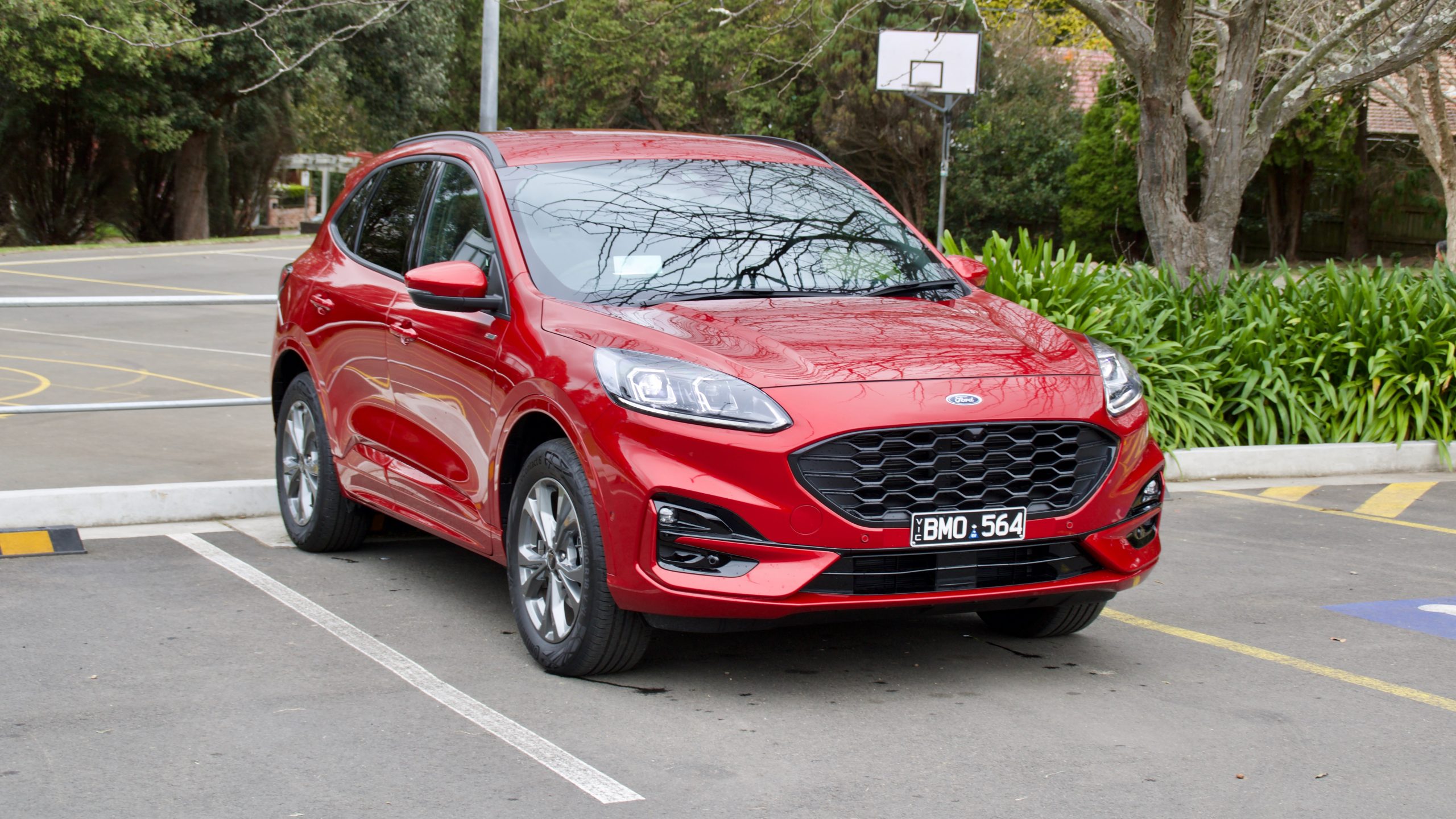
Plug-in hybrids are definitely something that is yet to take off in Australia, and a look at European and North American automotive catalogues proves just that. In Australia, we have the Ford Escape, Peugeot 3008, Mitsubishi Outlander and MG HS offered as plug-in hybrid mid-size SUVs – yet elsewhere in the world, plug-in hybrid versions of the Kia Sportage, Hyundai Tucson, Volkswagen Tiguan, Toyota RAV4 and even the Citroen C5 Aircross are offered.
Price & Equipment: 7/10
While the entry-level Escape costs $37,990 plus on-road costs and the mid-spec ST-Line $42,990 +ORC, the Escape PHEV asks $54,940 +ORC (or around $60,500 drive away) – that’s despite being based on the ST-Line and not the top-spec Vignale, which is priced from $48,590 +ORC.
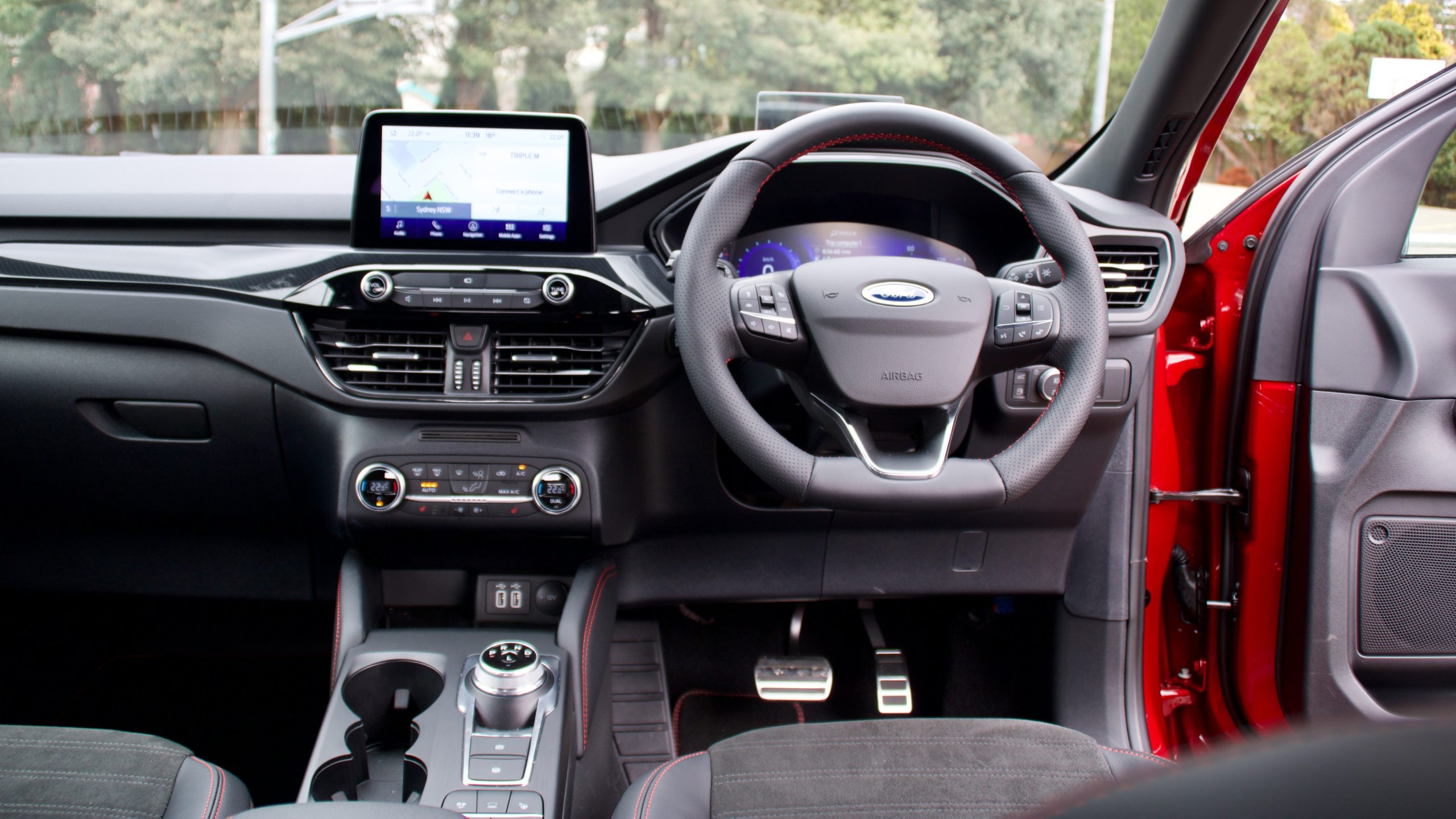
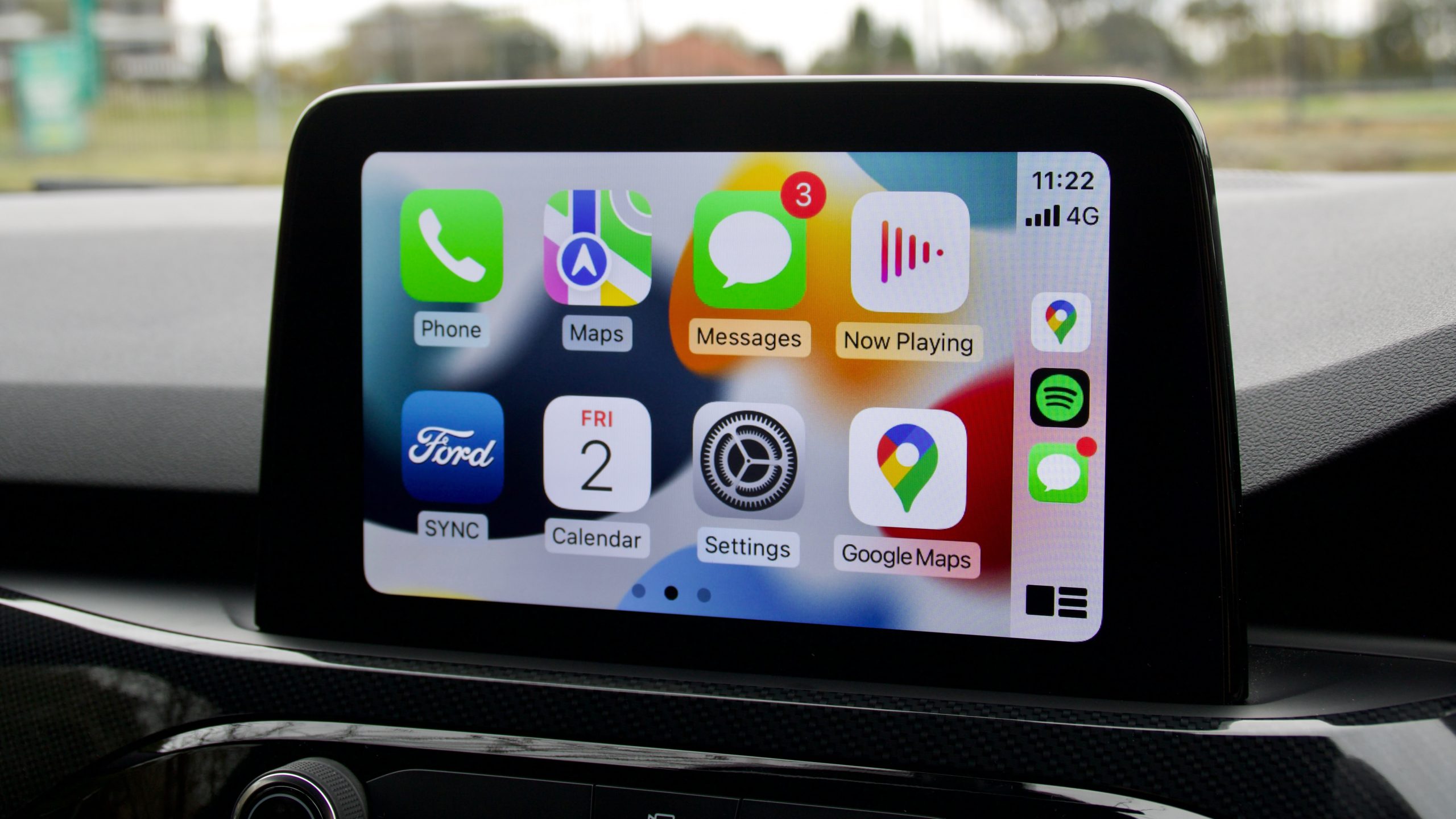
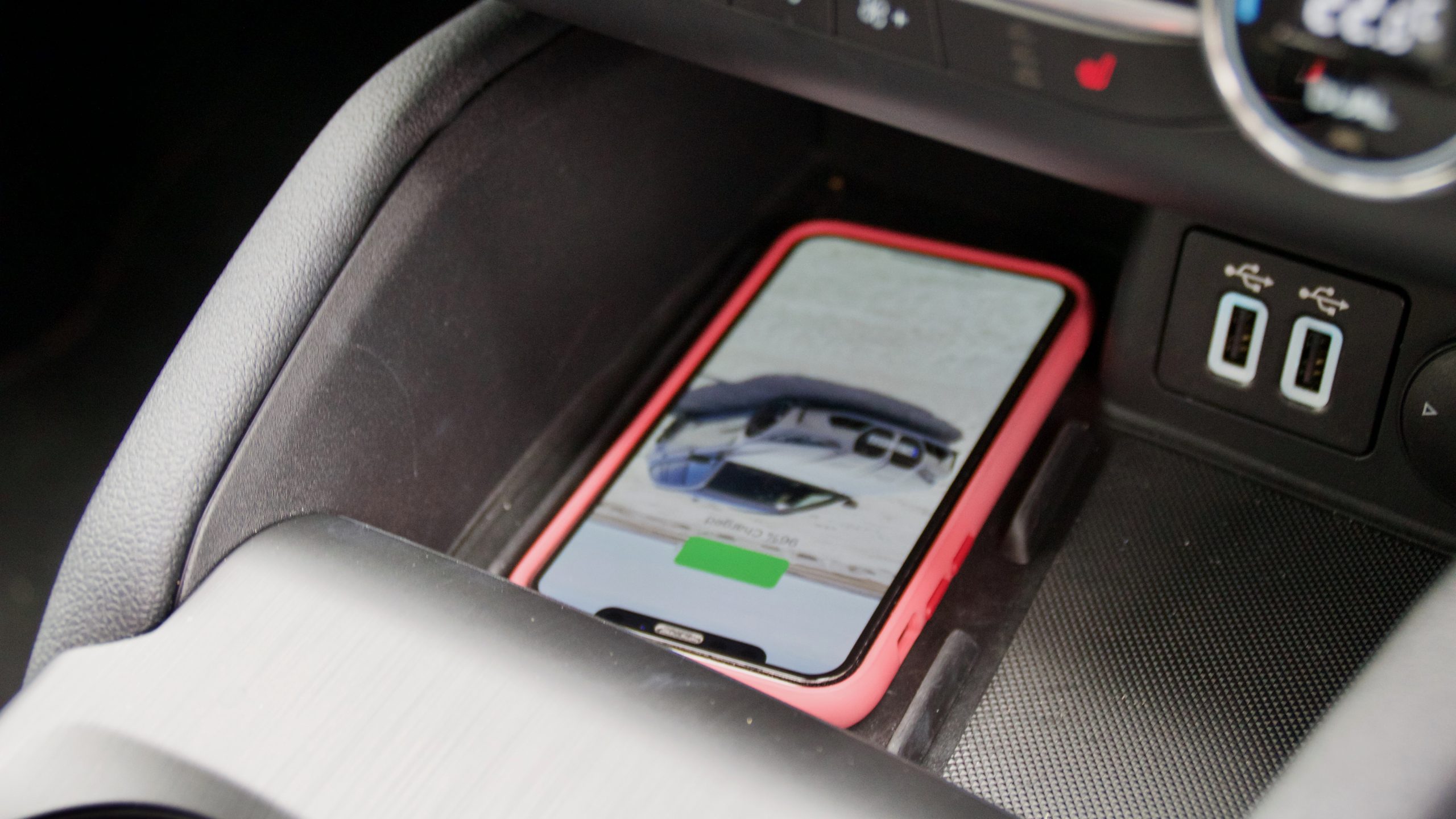
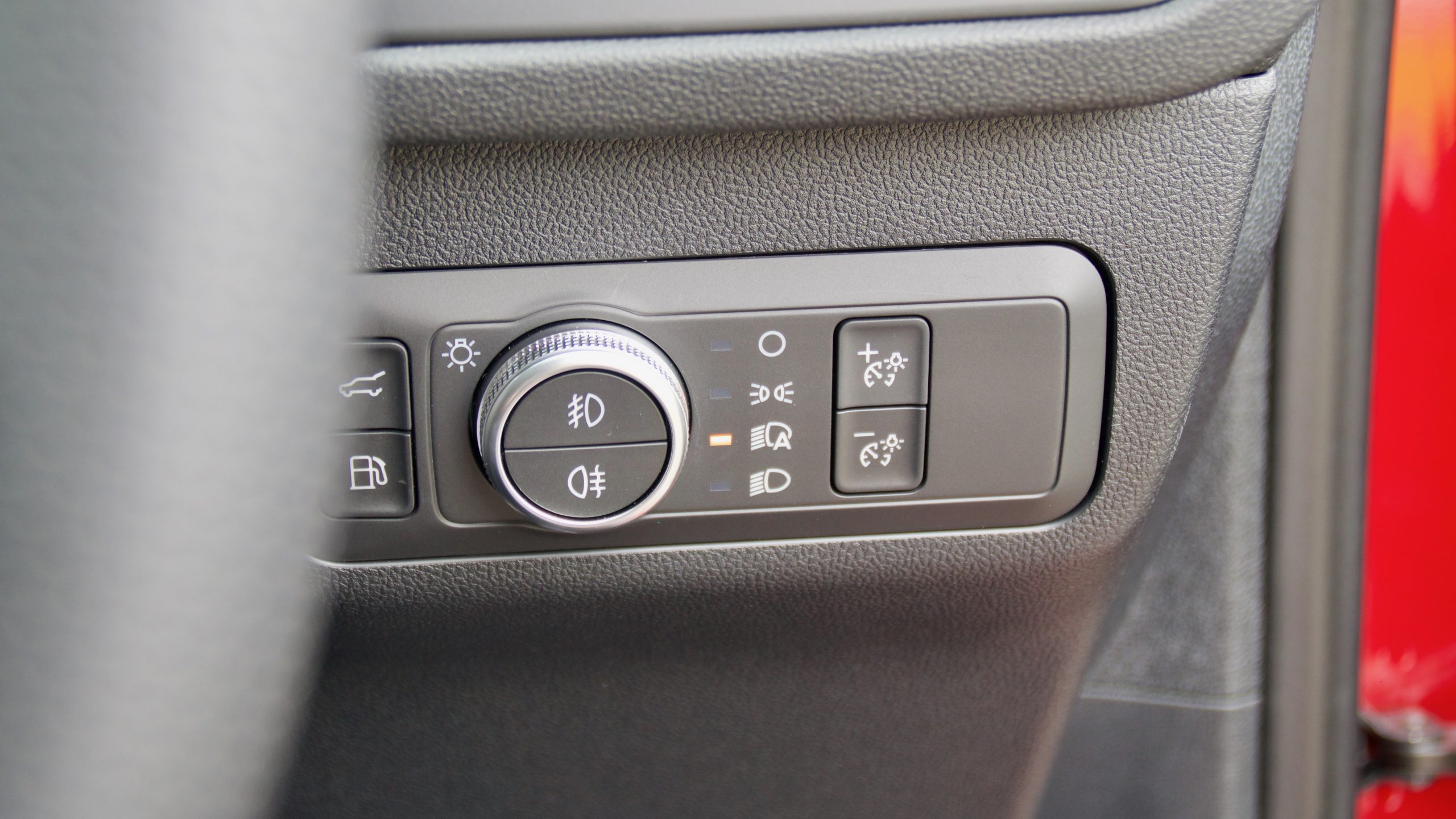
Standard kit on the 2022 Ford Escape ST-Line PHEV includes 18-inch alloy wheels, automatic LED headlights with automatic wipers, keyless entry and start, heated and auto-folding mirrors with puddle lamps, roof rails, rear privacy glass, synthetic leather and suede upholstery, a 10-way electrically adjustable driver’s seat, a synthetic leather steering wheel, dual-zone climate control with rear vents, an 8.0-inch touchscreen with wired Apple CarPlay and Android Auto, digital radio, satellite navigation with live traffic, a wireless phone charger, a 575-watt 10-speaker B&O Play sound system, a 12.3-inch digital driver’s cluster, LED ambient lighting, selectable driving modes and four USB charging ports.
Safety kit includes six airbags, auto emergency braking (AEB) with pedestrian and cyclist detection, blind-spot monitoring, rear cross-traffic alert (with braking), adaptive cruise control with stop and go functionality, traffic jam assist, lane keeping assistance with lane departure warning, lane trace assist, auto high beam, speed sign recognition with intelligent speed assist, driver attention monitoring, front and rear parking sensors and a reversing camera. The Escape has a five-star ANCAP rating from 2019.
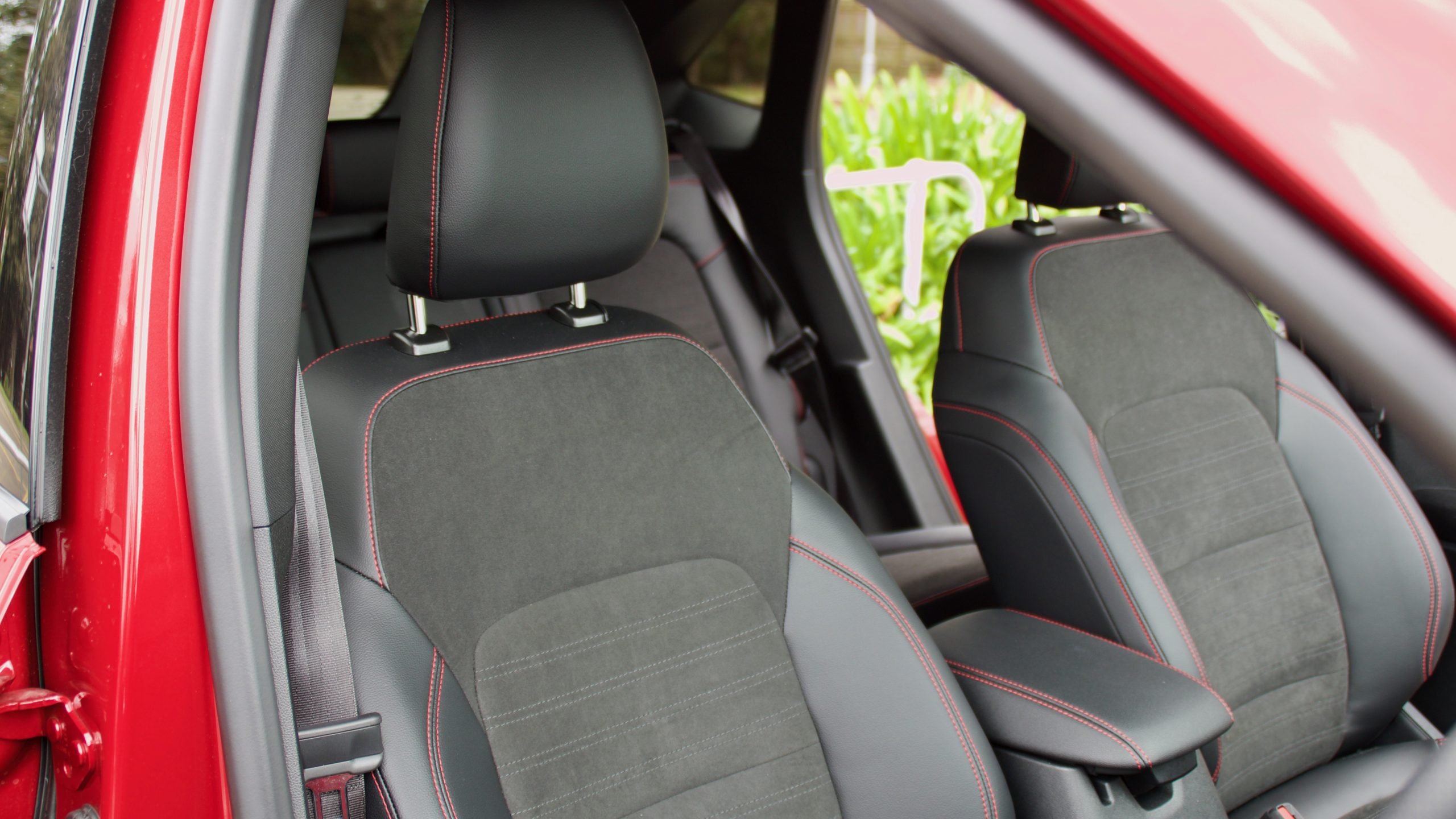
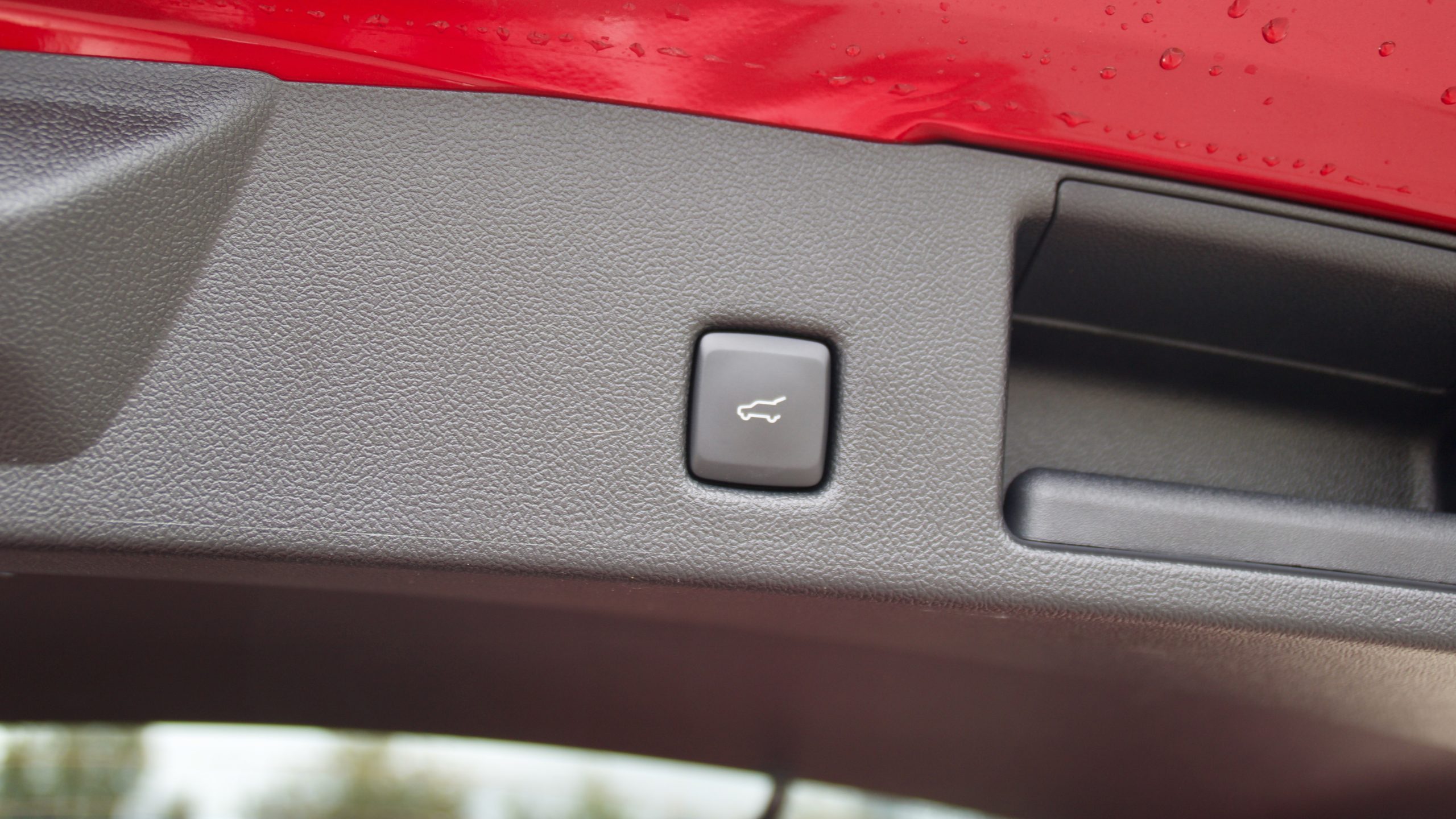
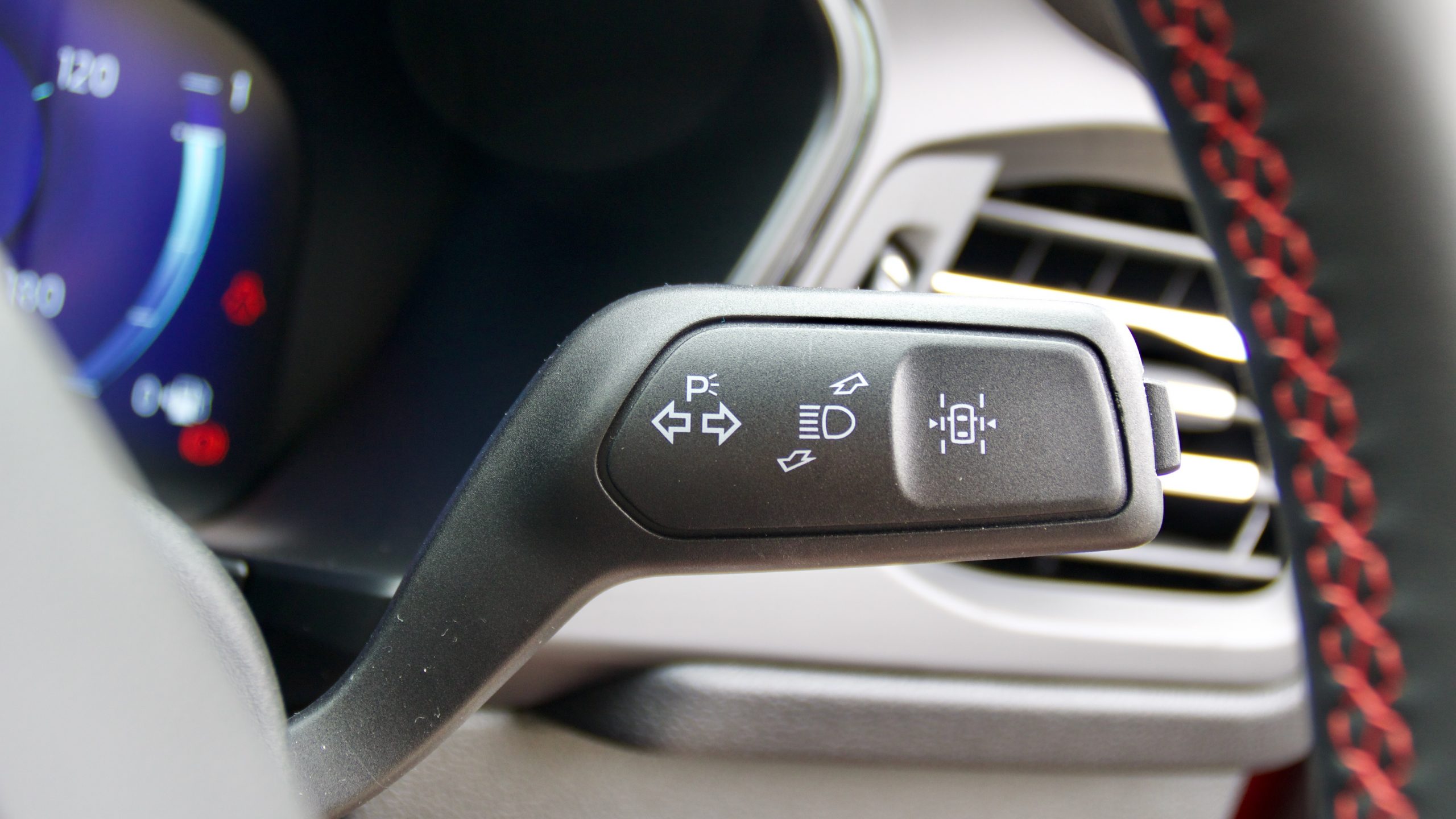
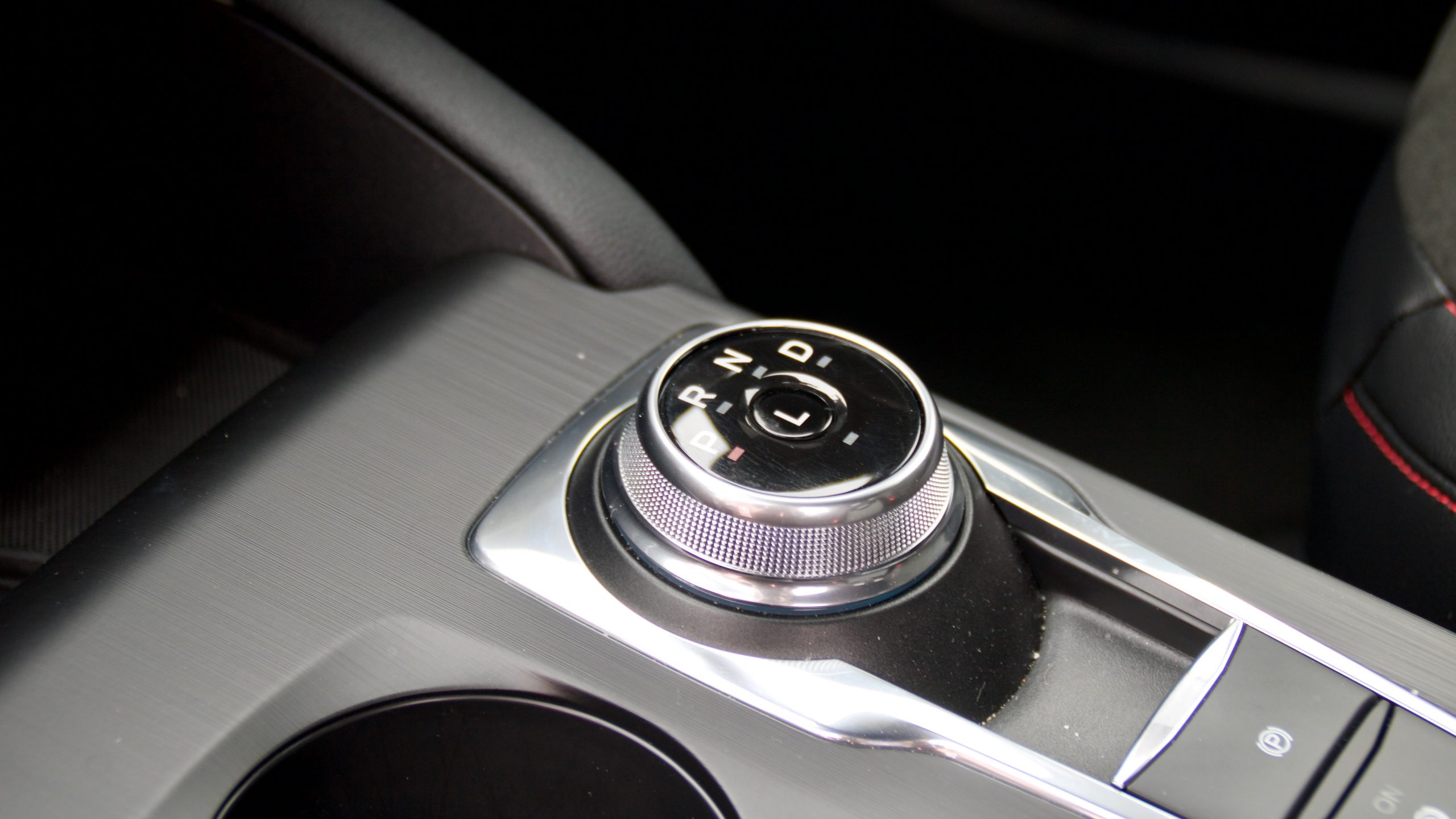
Colour options for the Escape ST-Line PHEV include the no-cost ‘Frozen White’ and ‘Agate Black’, as well as the $700-extra ‘White Platinum’, ‘Solar Silver’, ‘Blazer Blue’, ‘Blue Metallic’, ‘Magnetic’ (grey) and our test car’s ‘Rapid Red’.
Aside from colour, two options are available for the Escape PHEV: the $1,950 ST-Line Option Pack that adds heated front seats, a hands-free electric tailgate, a heads-up display and Matrix LED headlights with adaptive high beam, and the $1,500 Parking Pack that adds automatic parking, a front camera and door edge guards to protect the car when opening doors.
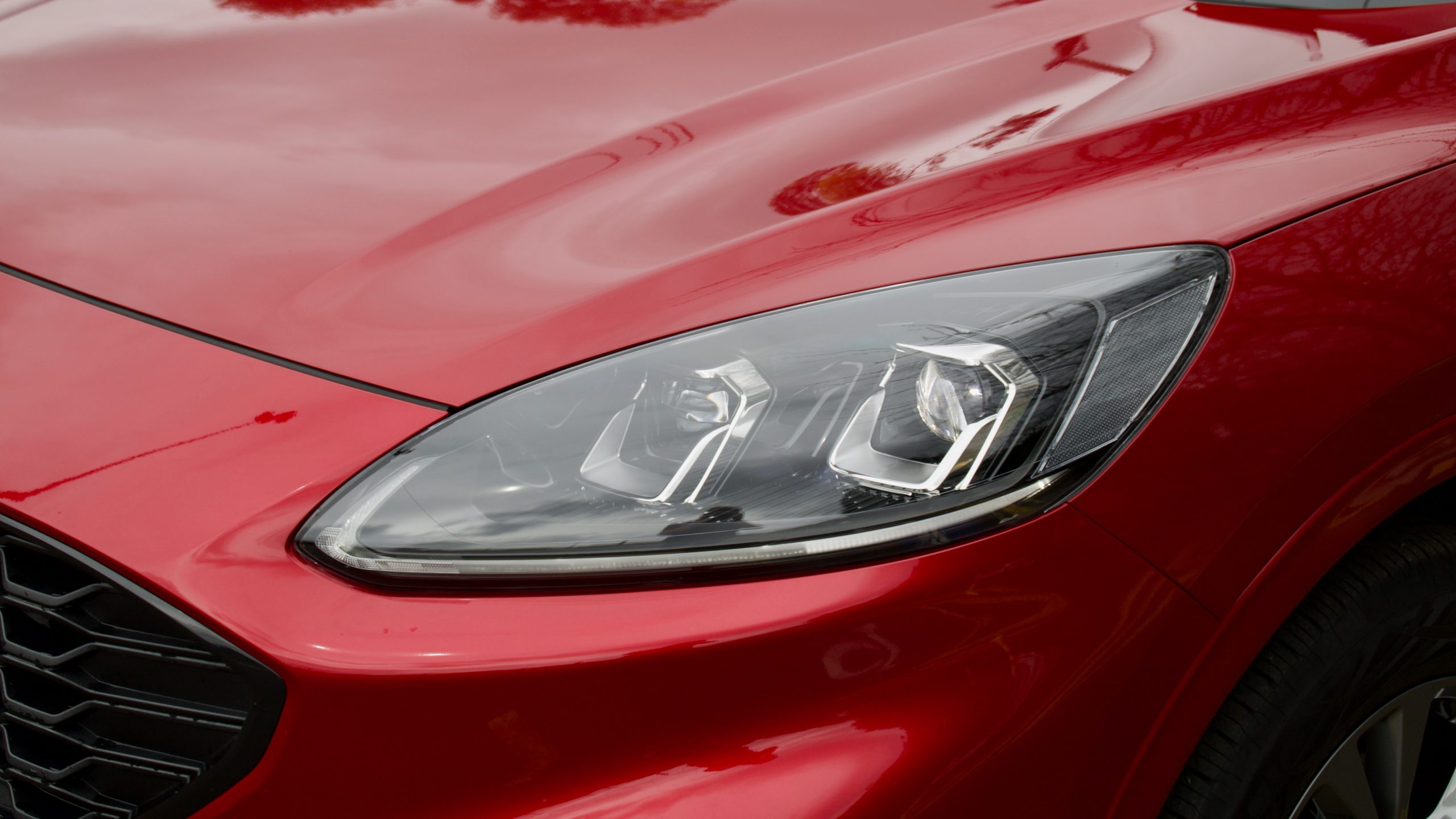
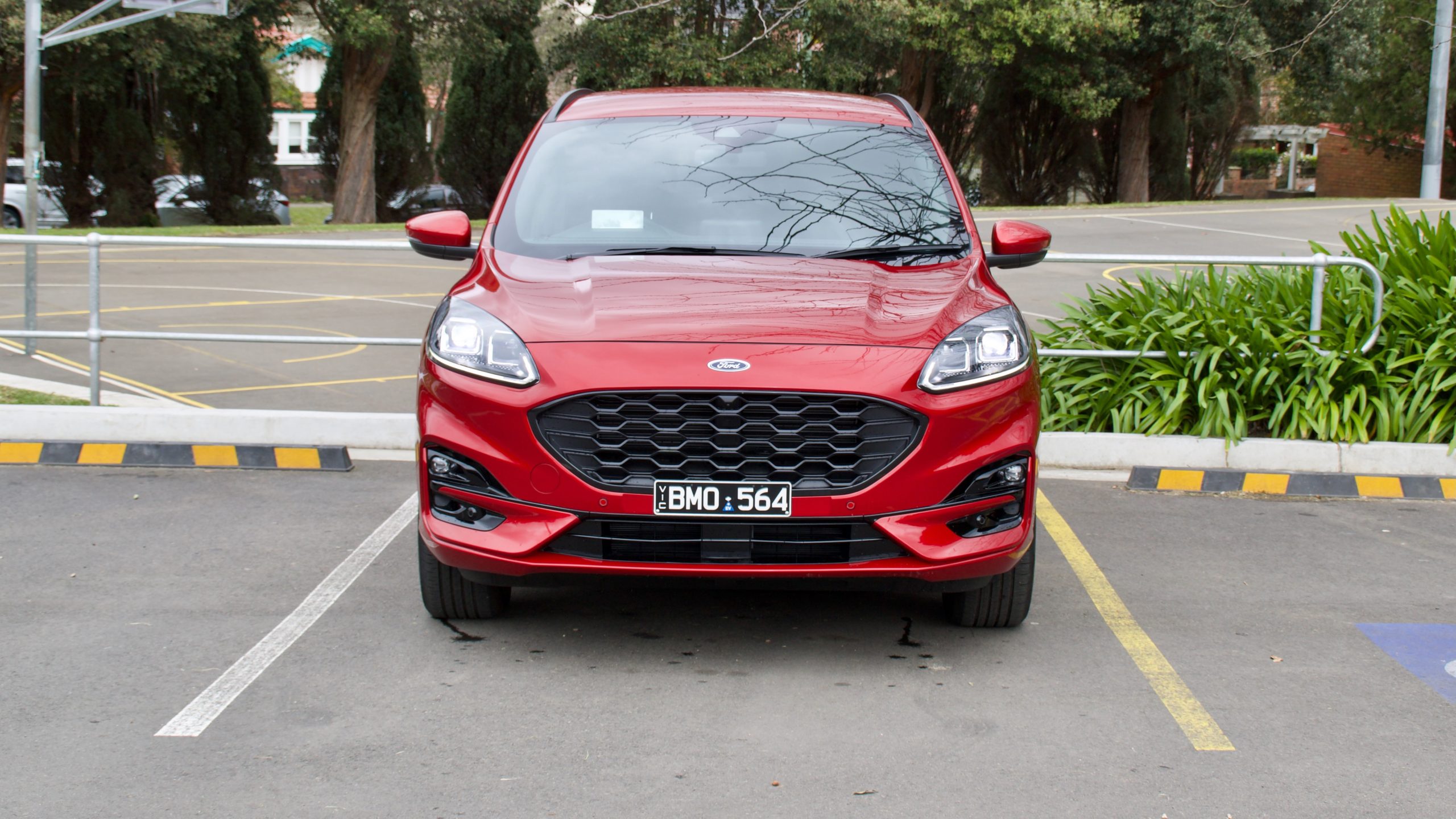
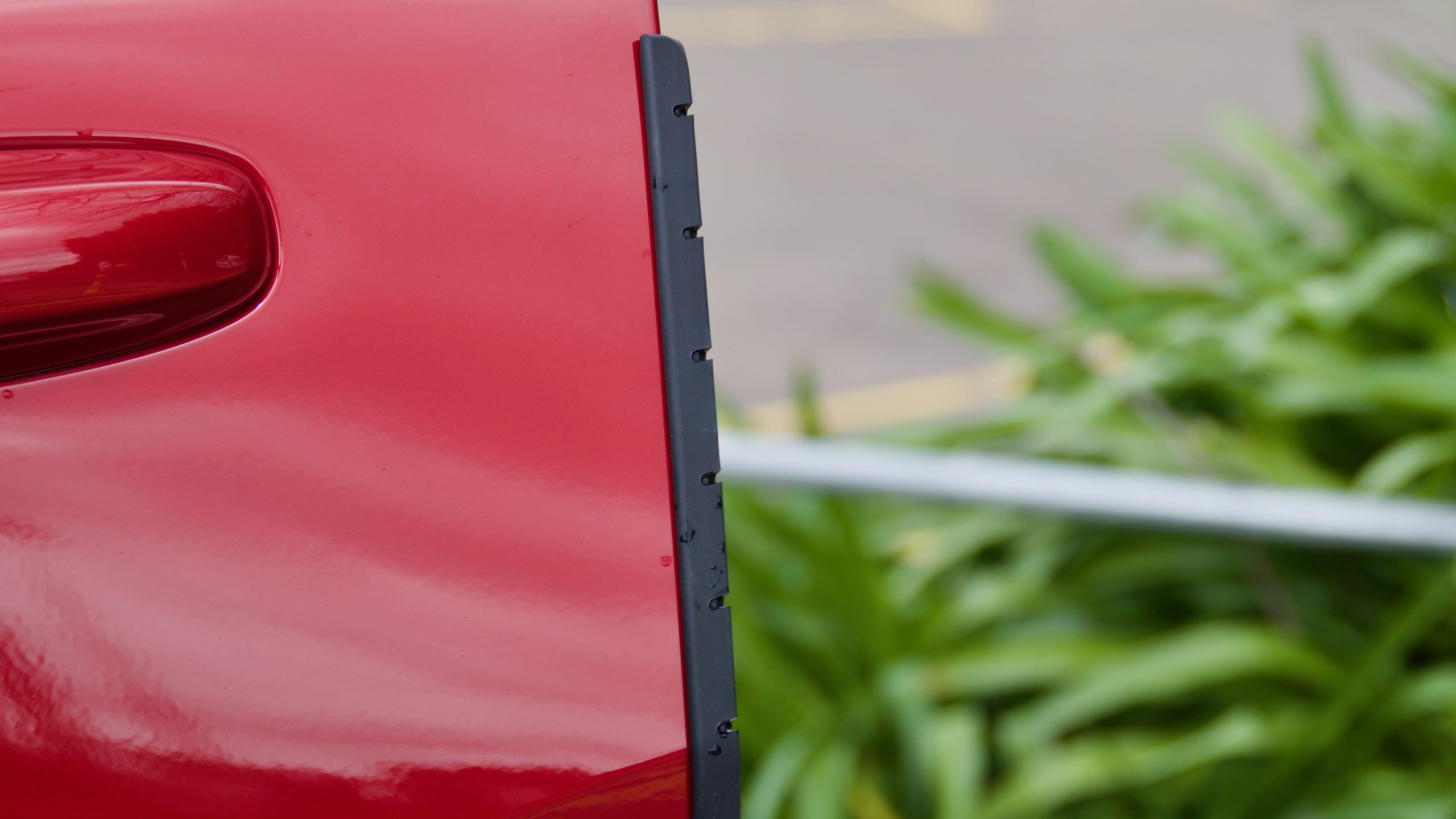
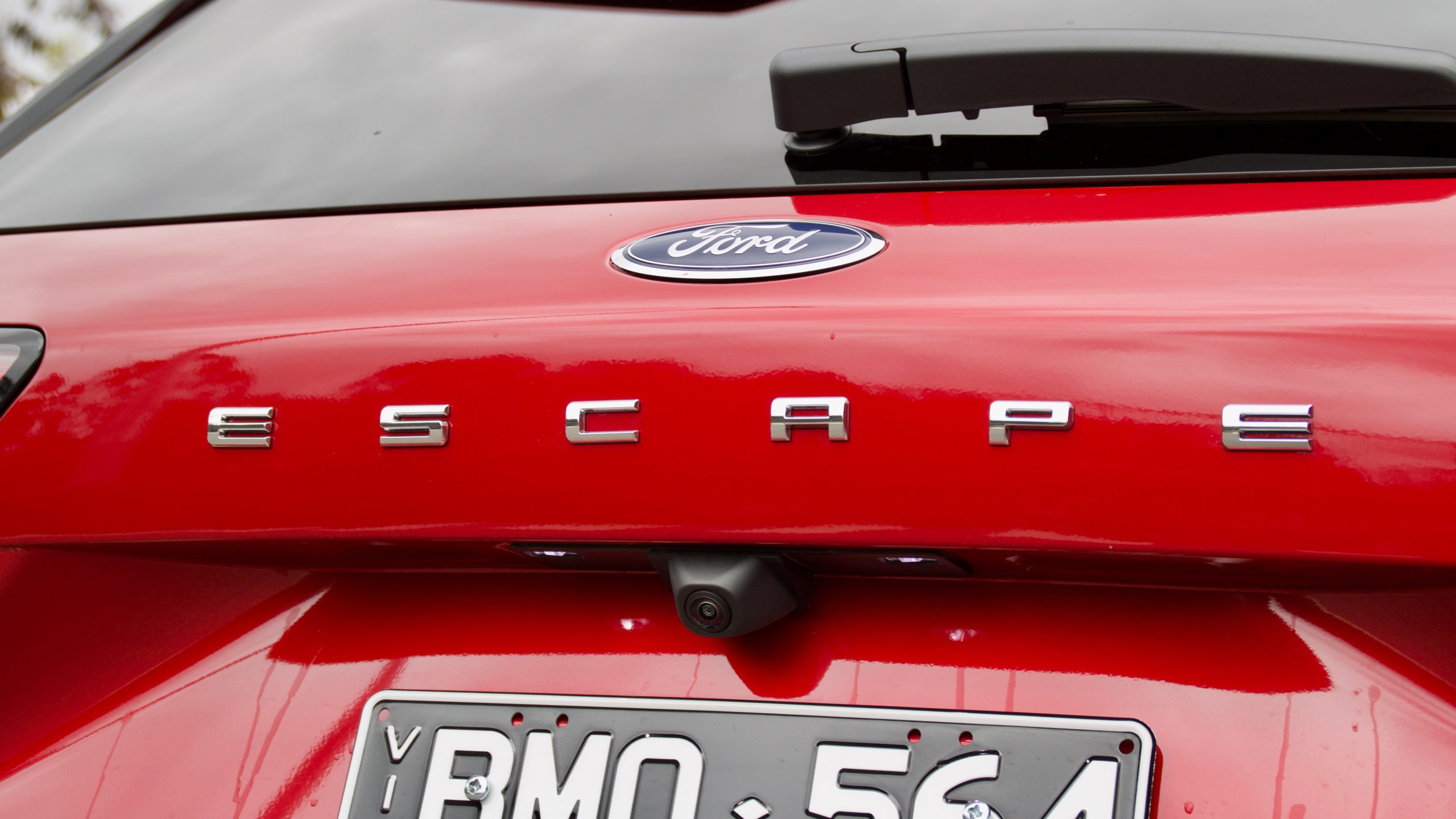
We see the Mitsubishi Outlander Plug-In Hybrid Aspire as the Escape PHEV’s biggest rival. It’s priced from around $66,500 drive away – around $6,000 more than the Escape – but it offers more equipment, better performance and efficiency and it’s a physically bigger car. Buyers must choose both option packages on the Escape (making it around $64,000 drive away) and yet, the Outlander still has more kit.
Performance & Economy: 8/10
Under the bonnet of the Escape is a 2.5-litre Atkinson Cycle four-cylinder petrol engine combined with an electric motor on the front wheels to give 167kW of power (at 6,250rpm). The electric motor draws its power from a 14.4kWh battery pack for a claimed electric-only range of 56km. The official claimed 0-100km/h sprint time is 9.2 seconds, which feels on the money – it does feel quite a lot slower than the more powerful 2.0-litre turbo engine in the rest of the Escape range.
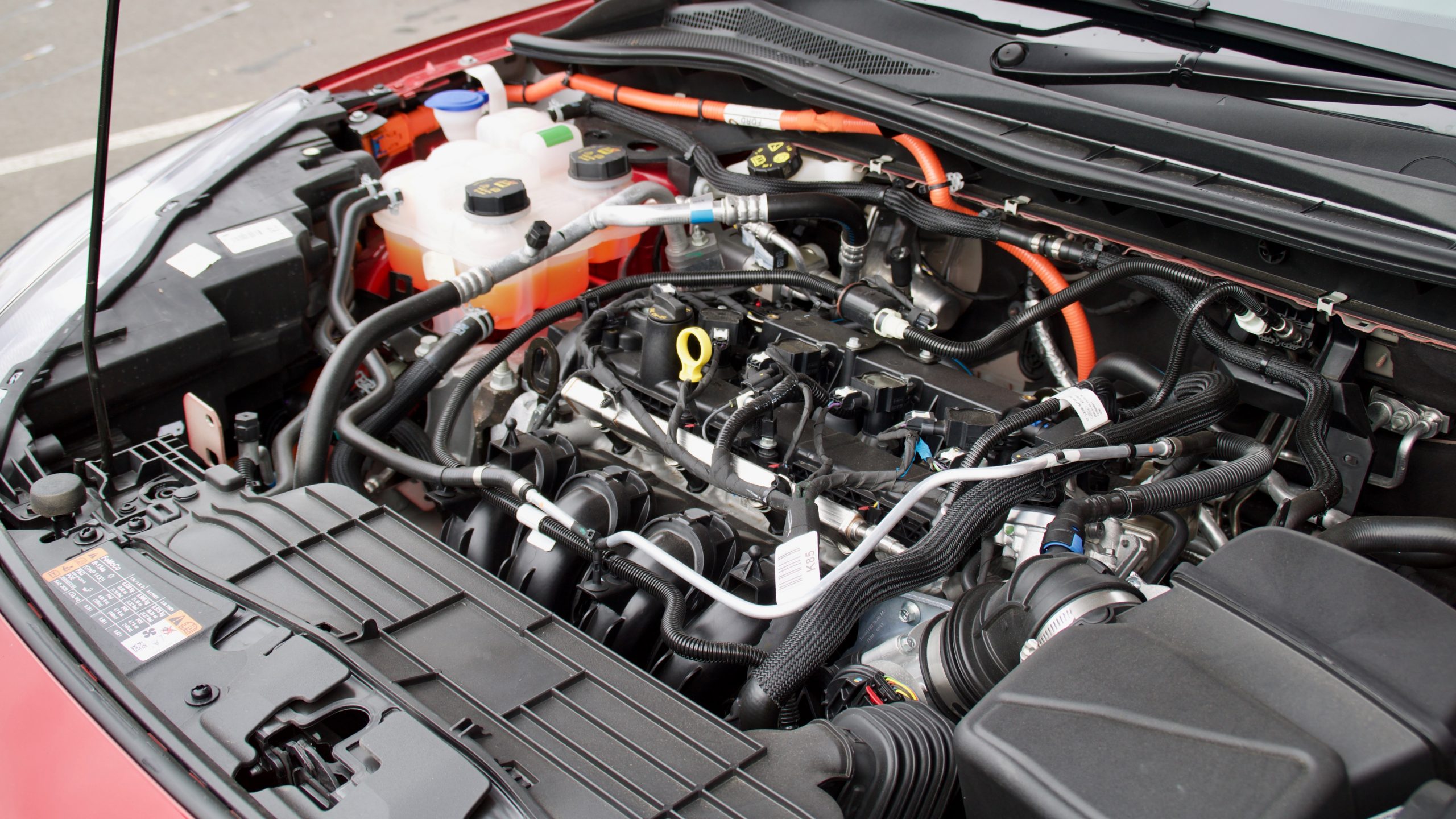
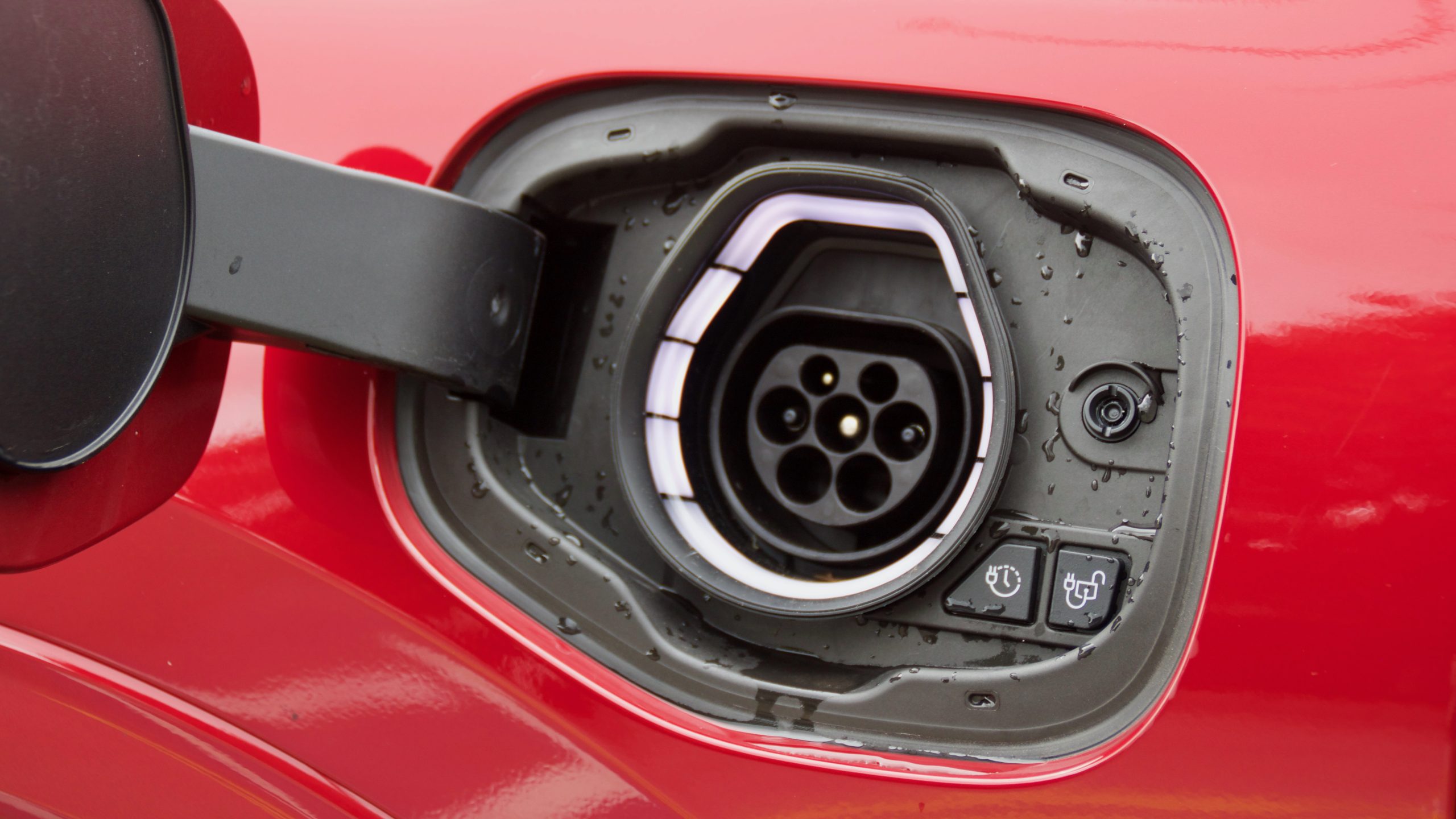
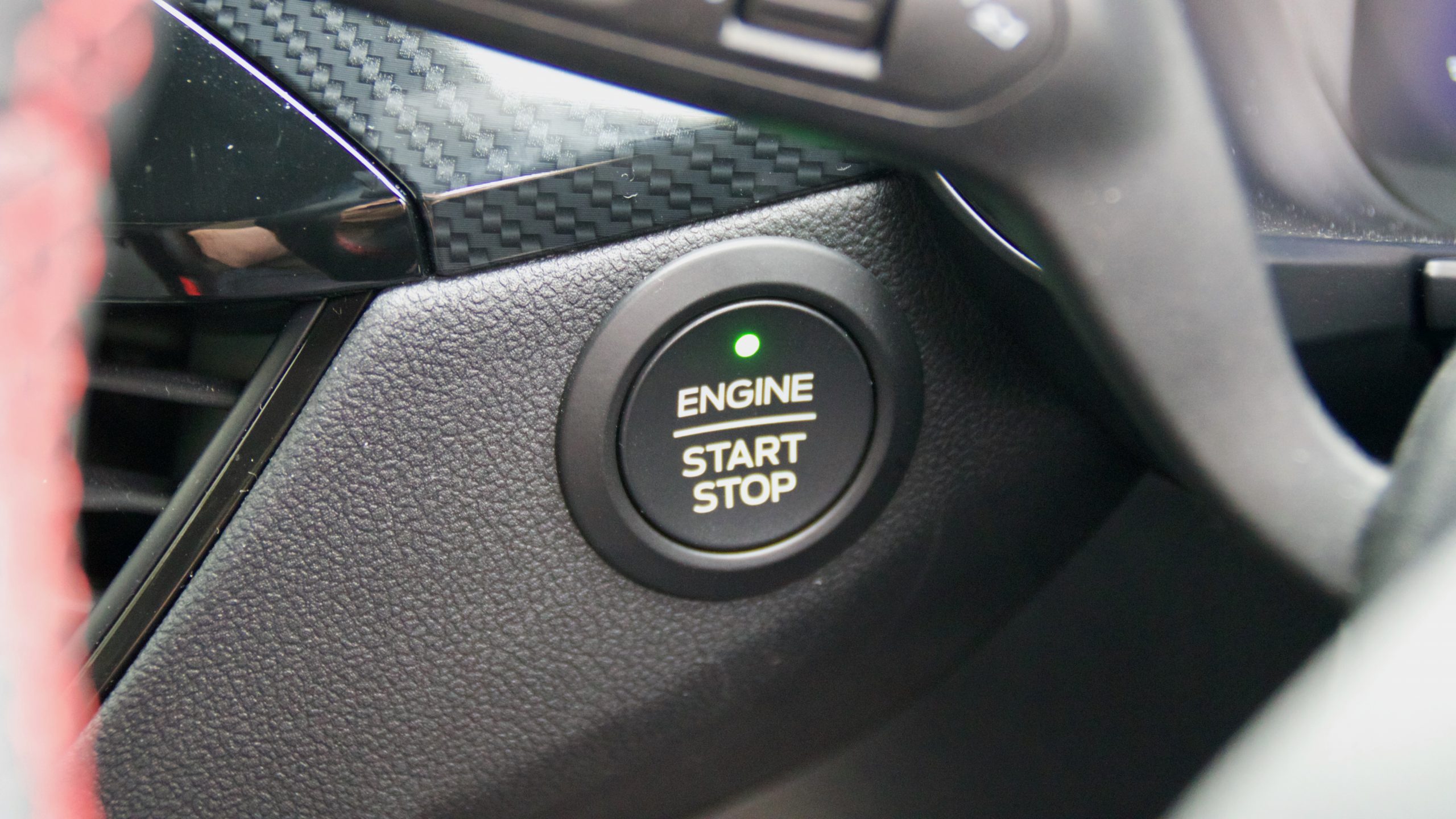
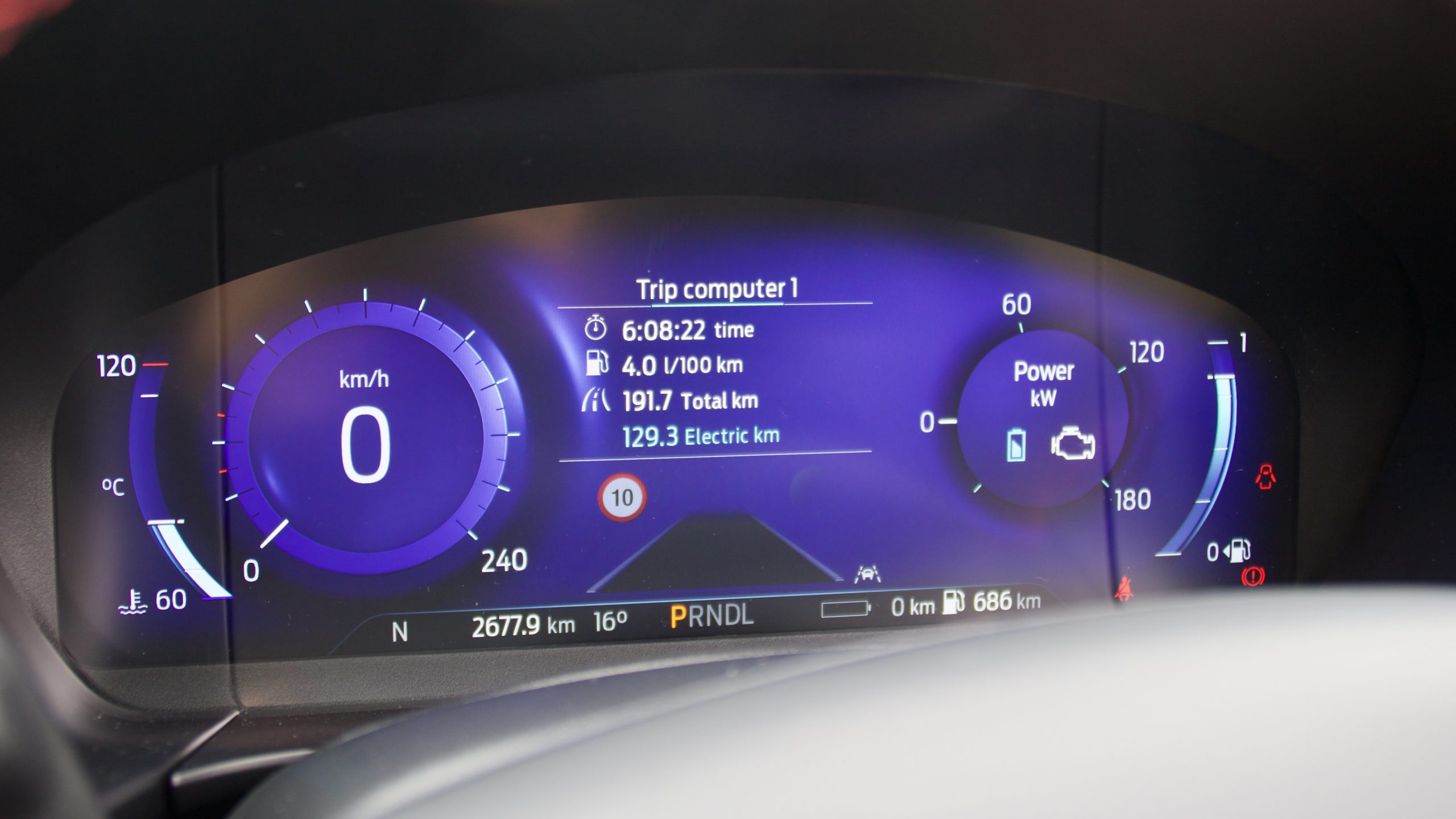
Immediately, you notice how smooth the Escape PHEV’s drivetrain is. The throttle response is more relaxed than the rapid turbo petrol Escape, which makes it easier to set off smoothly. In EV mode, it feels reasonably quick and will happily travel at highway speeds on electric power alone. Once the charge runs out, it reverts to hybrid mode for both electric and petrol propulsion – it’ll still get up to around 40km/h on electric power, while the petrol motor dominates above that point.
The Escape PHEV is officially rated at 1.5L/100km for fuel consumption, with claimed CO2 emissions of just 33g/km. Of course, that economy will depend on how much you’re able to charge it – from collecting it with a full charge, we travelled 53km on electric-only power and our combined fuel consumption after the first 100km was 3.3L/100km. If you’re unable to charge it, it will revert to being a regular hybrid and our consumption in hybrid mode was 6.2L/100km – while it’s not as efficient as running it with charge, it’s still a lot more efficient than the petrol Escape, in our testing.
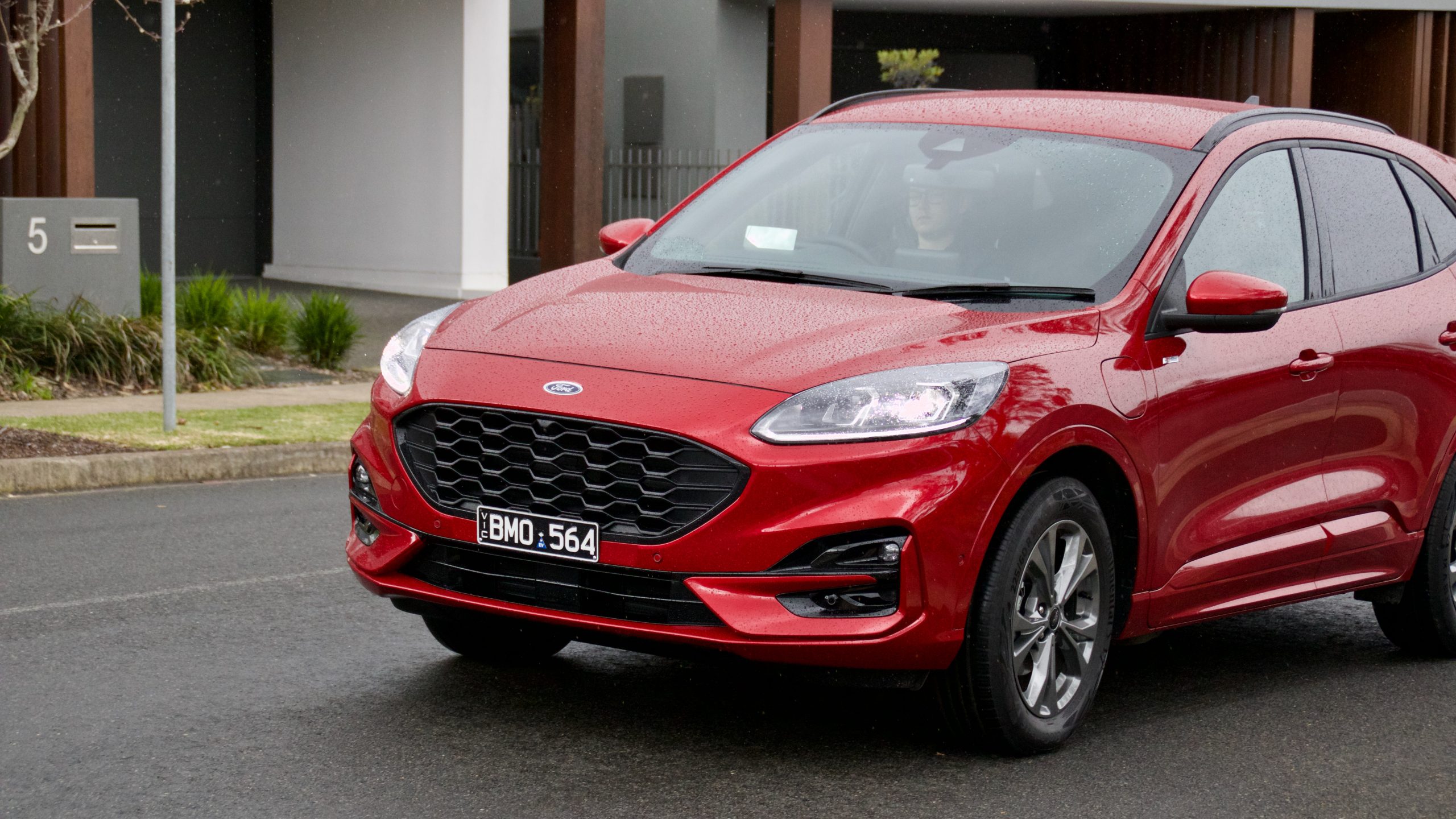
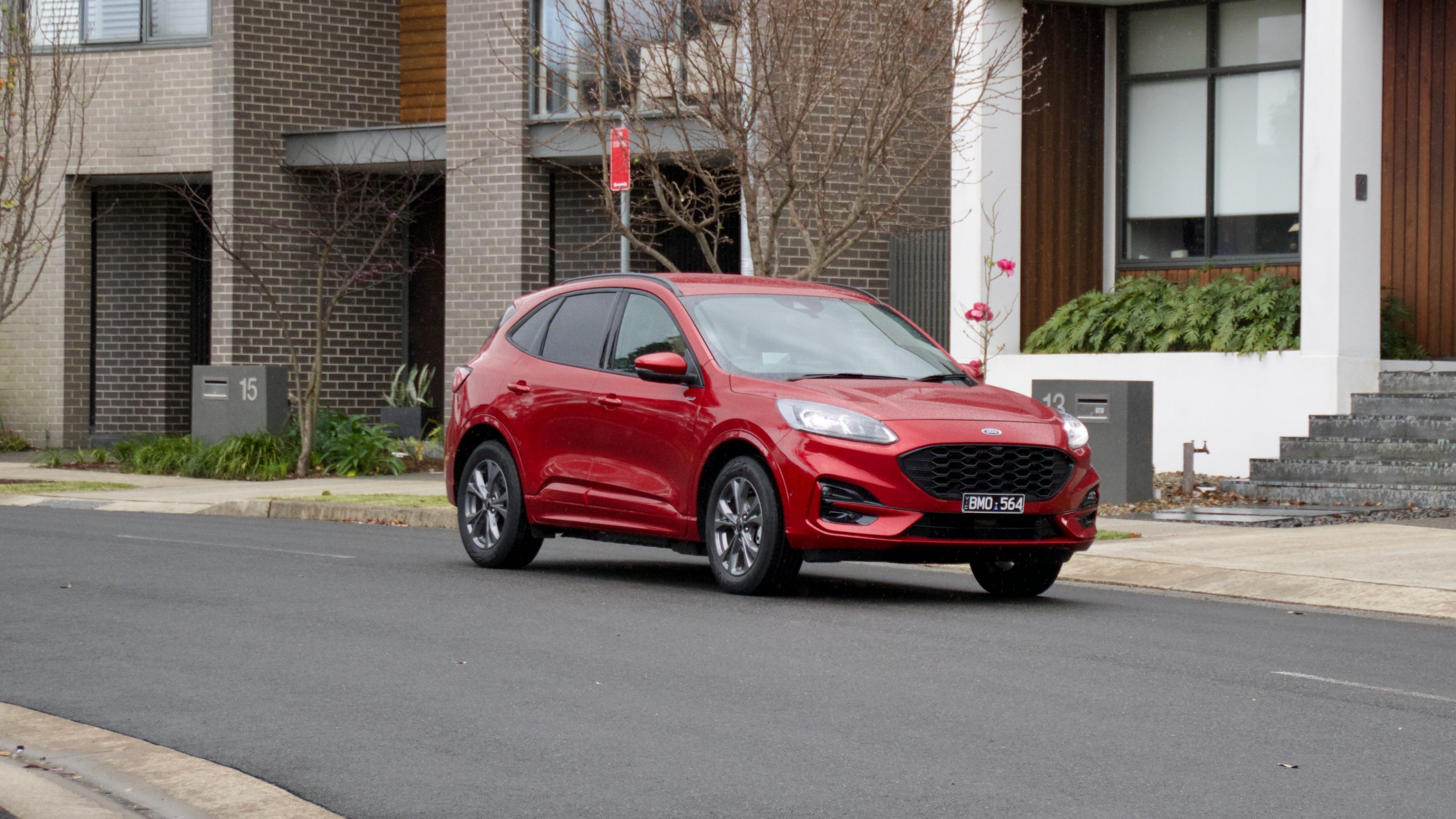
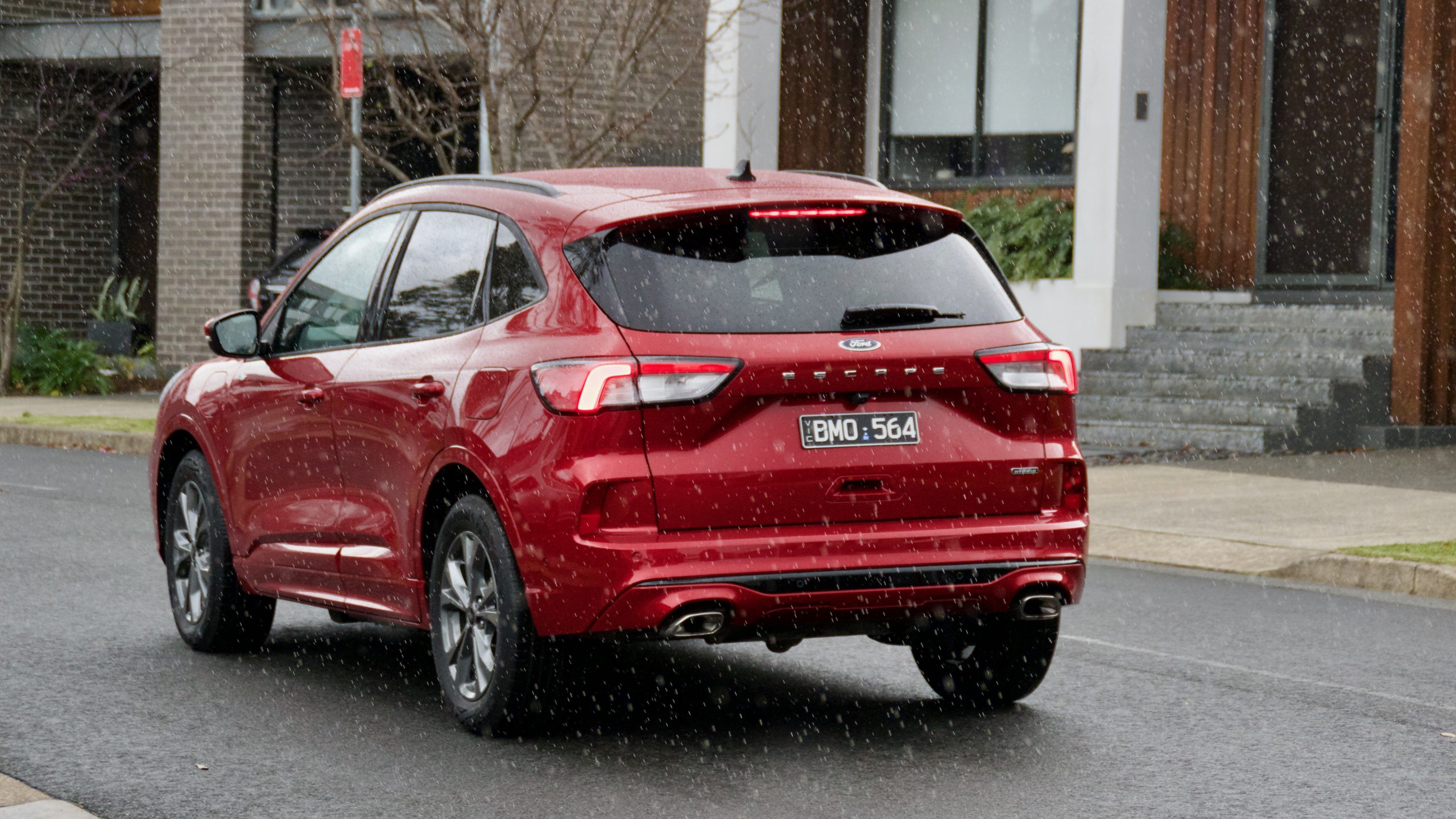
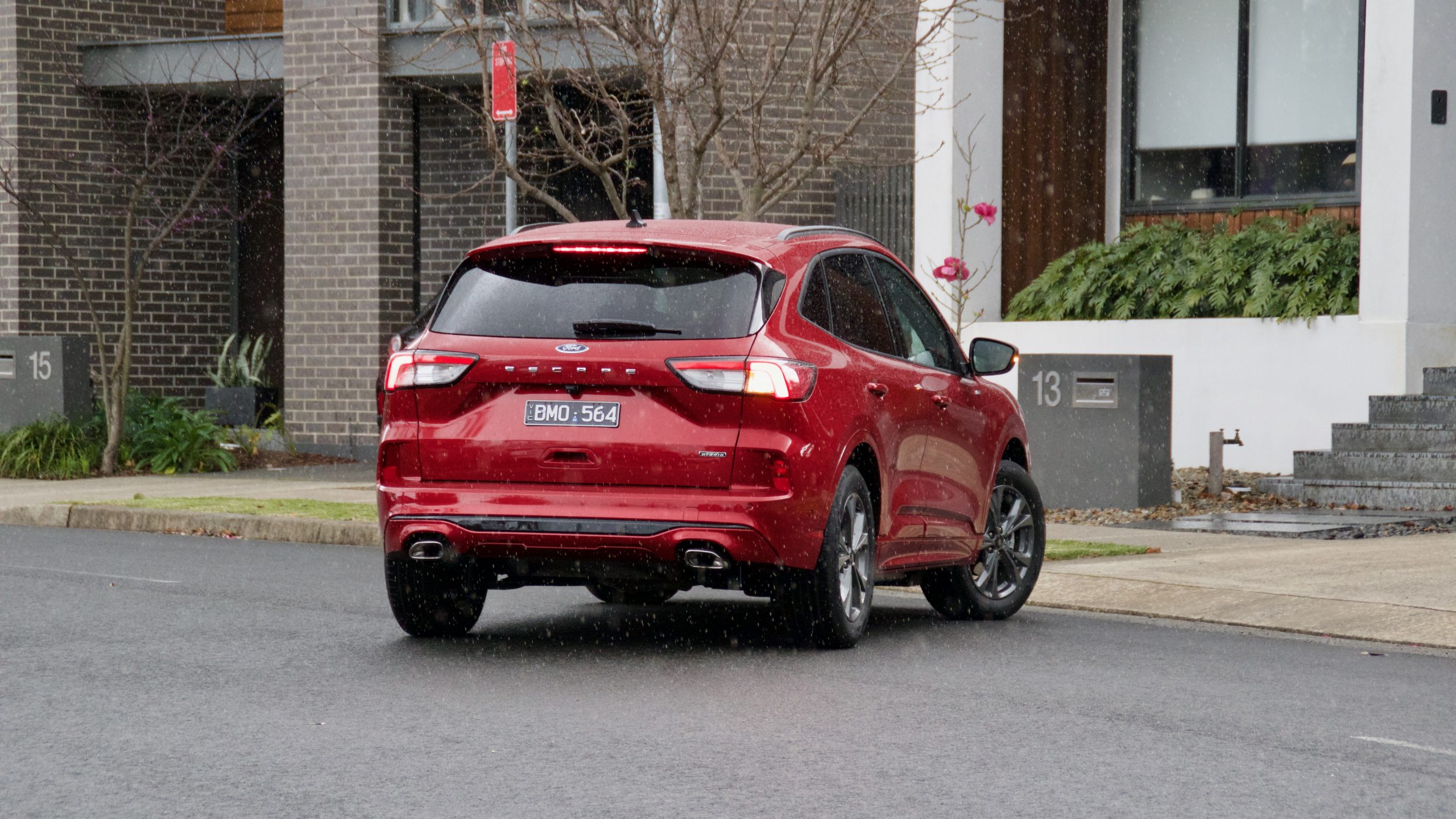
Charging the Escape to full takes around two hours using a 7.4kW charger, and around six hours if you’re using a household socket. Unfortunately, unlike the Outlander PHEV, which can charge using a higher-rate DC charger, the Escape is limited to just 7.4kW, which increases charging times and limits convenience. Because of that, we’d recommend charging it over night using a three-pin plug – otherwise, trips to the charging station will take a while. Buying a regular hybrid could be an option too. New Zealanders can buy an Escape hybrid, but unfortunately, not Australians just yet. Come on, Ford…
Ride & Handling: 7/10
The regular non-PHEV Ford Escape is known for being one of the best handling mid-size SUVs on the market, with a level of driving fun that most competitors would only dream of. Thankfully, the plug-in hybrid version of the Escape still handles well, with quick and reasonably feelsome steering that thankfully avoids the typically heavy feel of something like the Mazda CX-5, but it’s also much easier to tell what’s going on through the front wheels compared to the Mitsubishi Outlander PHEV. Of note as well is that the Escape is front-wheel drive only – the Escape hybrid overseas can also be all-wheel drive, but the PHEV is solely FWD.
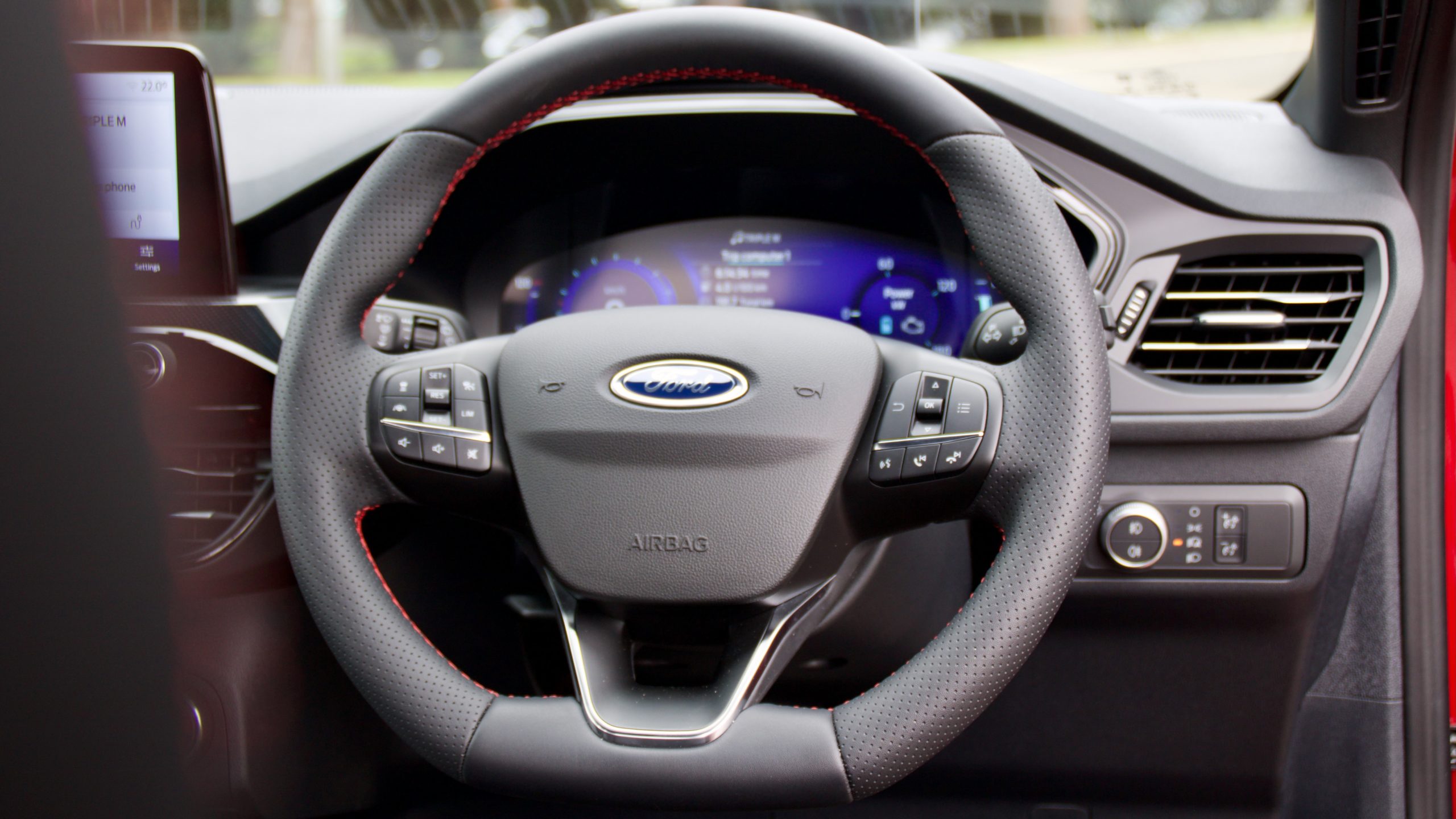
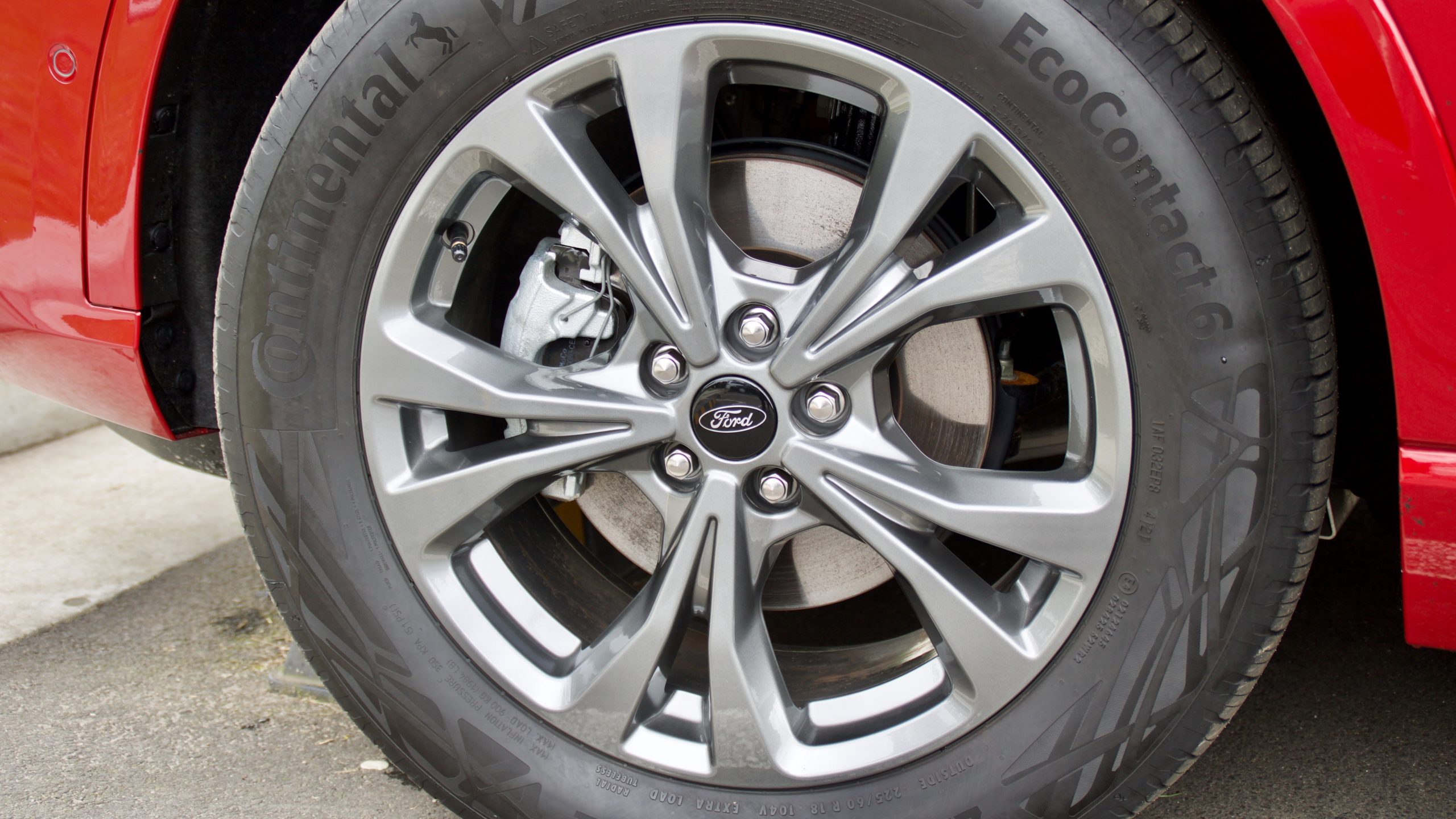
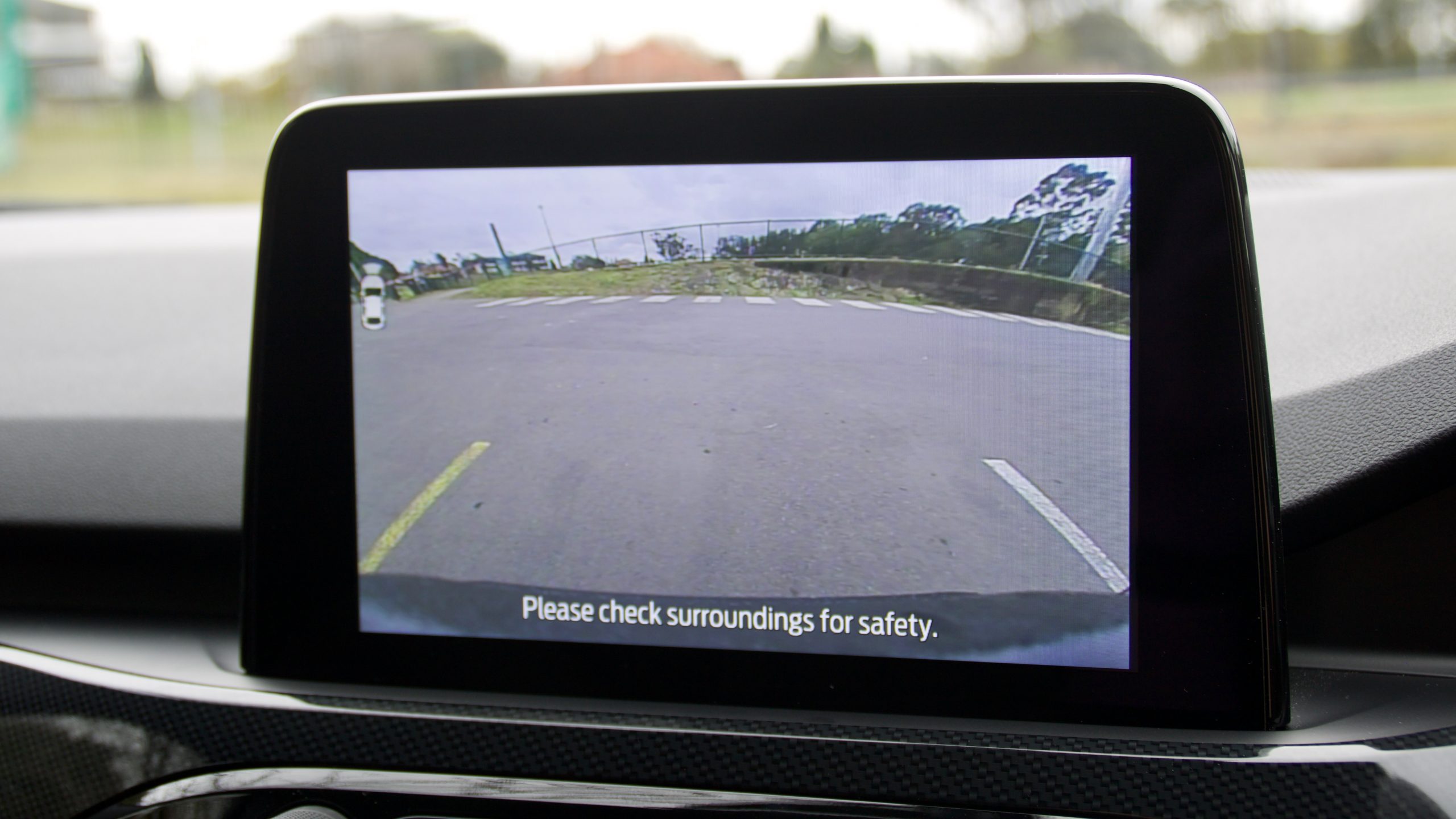
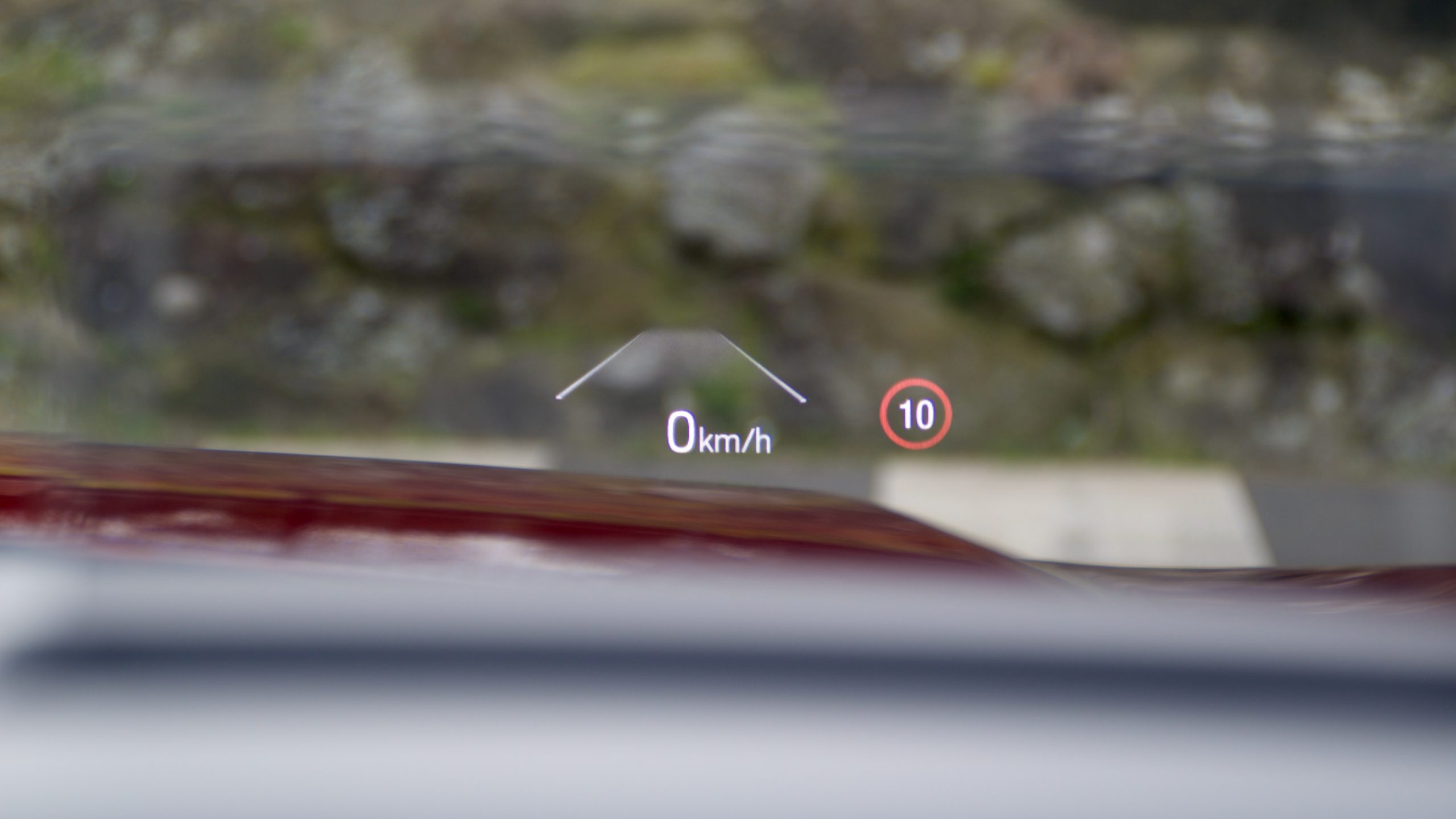
Sadly, the Escape PHEV’s ride doesn’t hit the same high notes we’re used to from Ford products. That’s largely thanks to two reasons: 1) the extra 222kg of the PHEV compared with the regular Escape and 2) the torsion beam suspension set up that all front-wheel drive Escape models now feature locally. Because of those factors, the Escape’s ride quality can be both firm and crashy, and it feels underdamped. Thankfully, the road noise levels are low, and its active safety kit is nice and subtle.
Interior & Practicality: 8/10
Based on the regular Escape ST-Line, the interior of the PHEV is largely identical to its petrol-powered sibling. It’s good quality, with many soft touch plastic surfaces, quite practical with lots of storage space and reasonably comfortable, though the dashboard layout could be more cohesive. We also think that some of the elements are starting to feel a bit dated, though we think that’ll be fixed later this year when the Escape’s mid-life facelift arrives with a new 12.3-inch touchscreen and new trim choices.
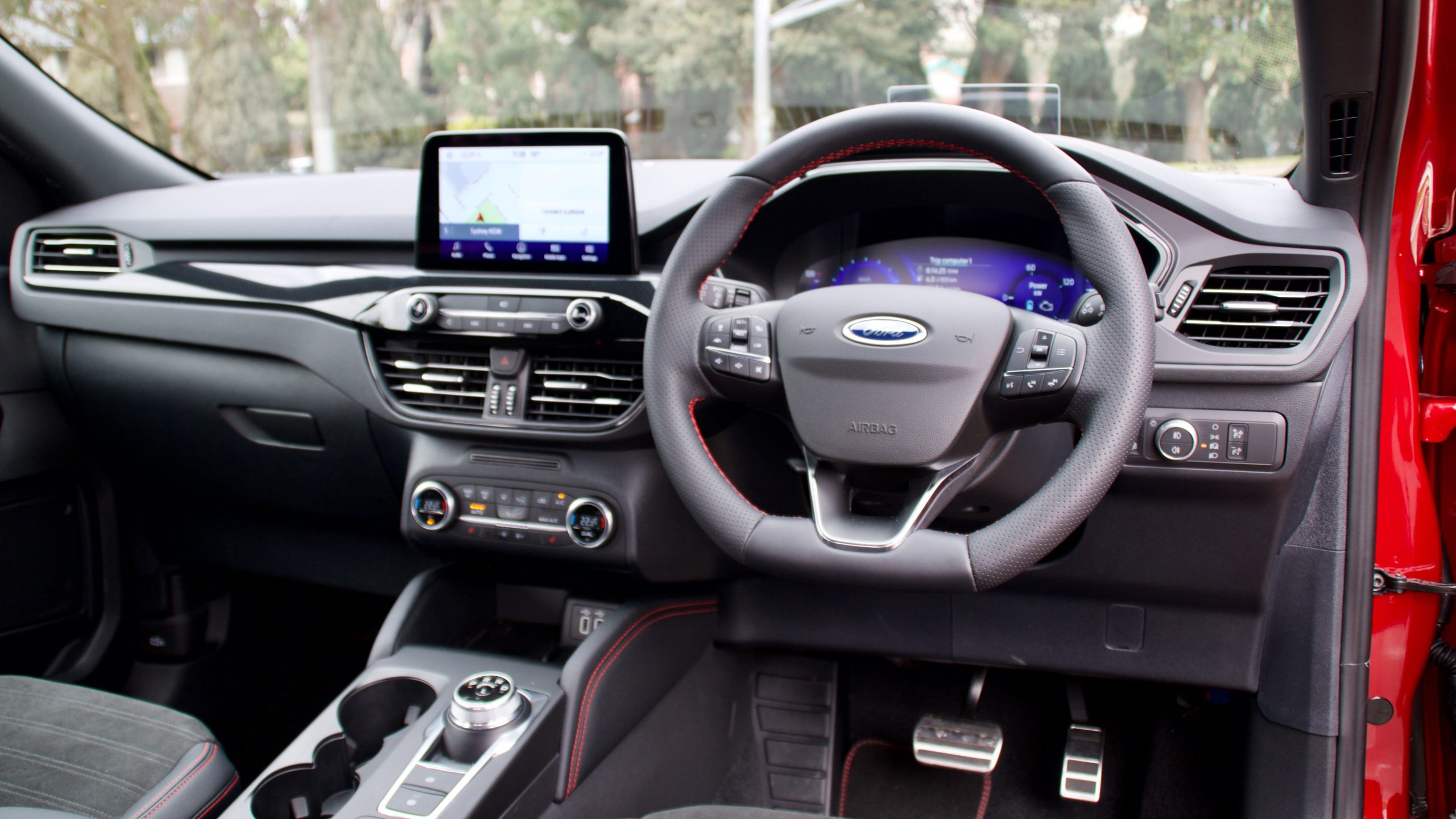
Centre of the cabin is a small 8.0-inch touchscreen that uses Ford’s older ‘Sync3’ infotainment software. It’s well featured with wired Apple CarPlay and Android Auto, satellite navigation with live traffic and digital radio and while it’s got a small screen and old software, it’s still a solid system that’s easy to use. The 10-speaker B&O Play sound system is also quite good, with deep bass and good customisation.
The interior is reasonably practical with big front cupholders, shallow but lengthy door pockets, a storage net on the passenger side, a deep bin beneath the centre console arm rest and a deep wireless phone charging area ahead of the gear shifter with both USB-C and USB-A port.
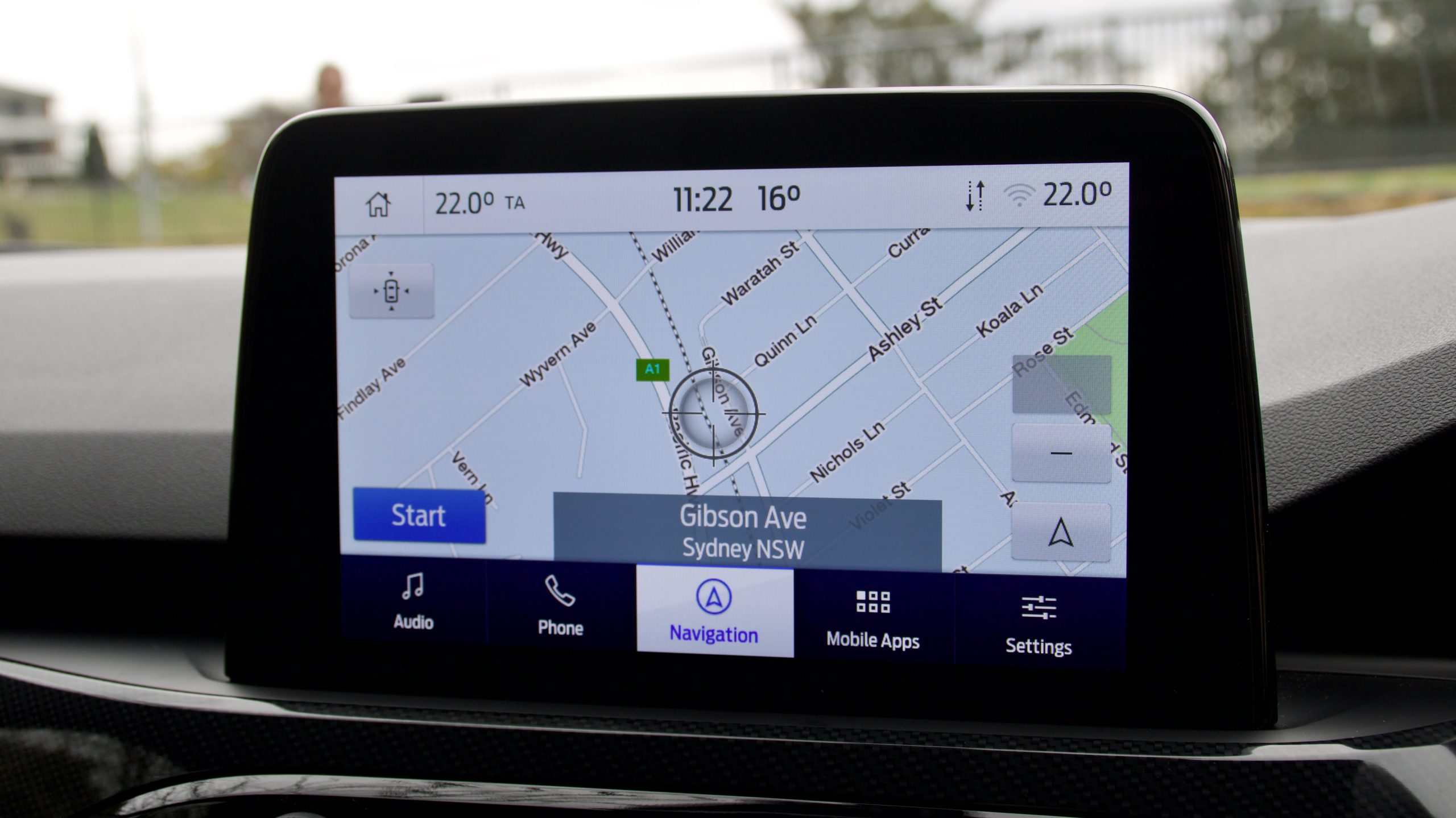
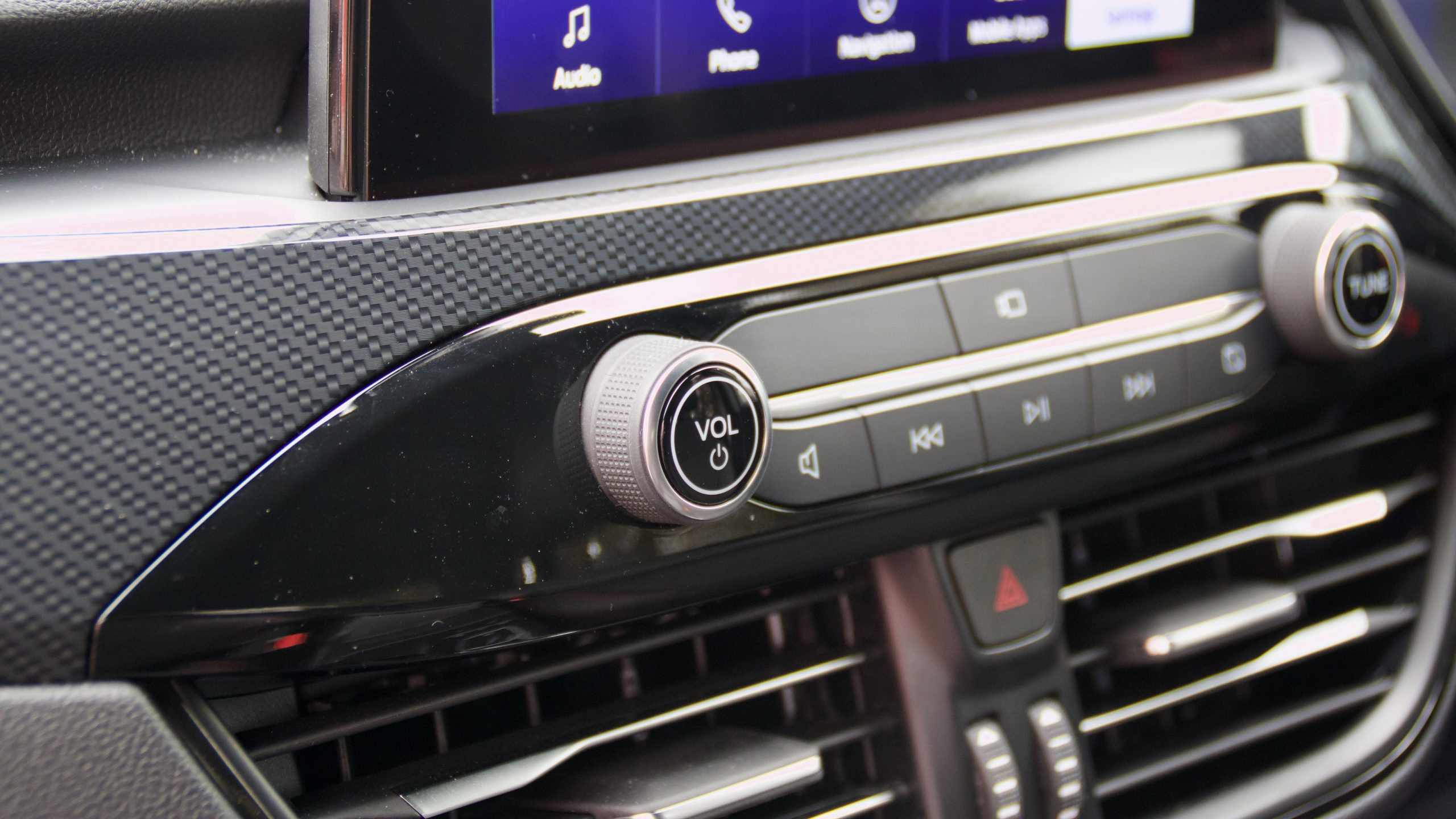
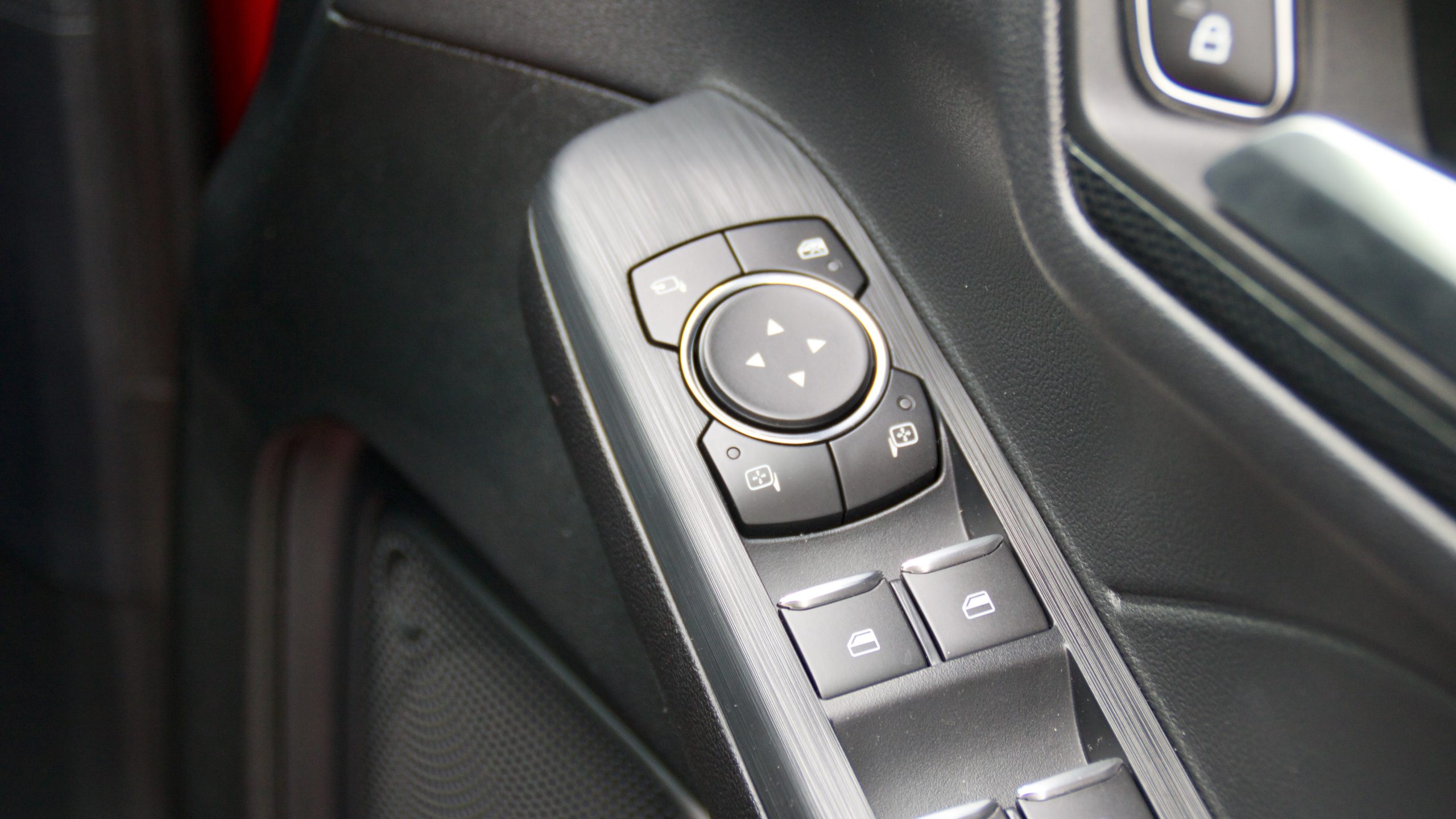
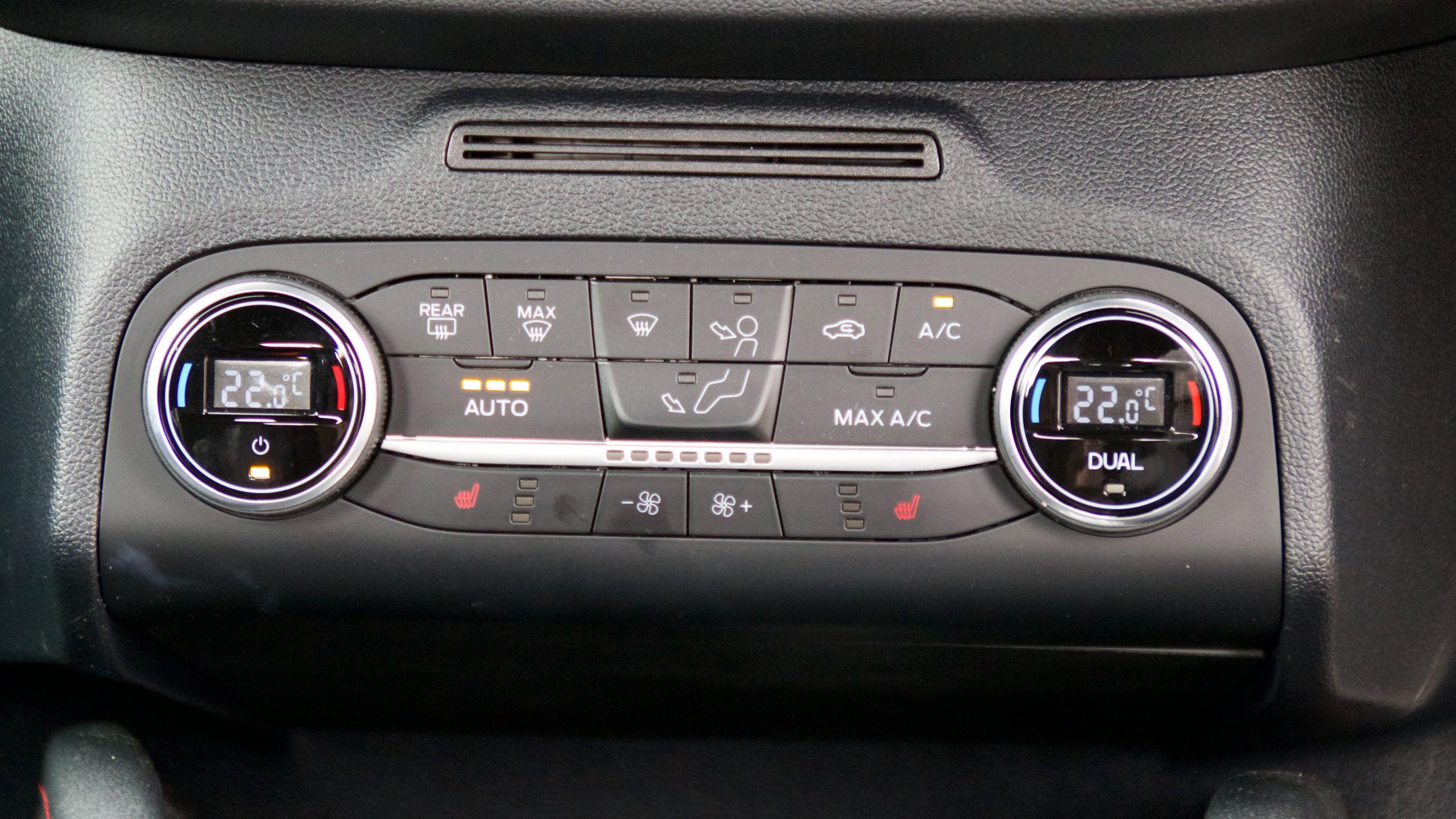
The back seat of the Escape is one of its best attributes as it’s reasonably spacious, and has useful features like air vents, charging ports, door pockets, map pockets and a centre arm rest with cup holders. The space on offer is pretty good, with ample room for six-footers – the legroom is good and the headroom in particular is excellent.
Impressively too, the soft touch materials from the front cabin carry over to the rear, so occupants can rest their arms on the doors without them getting sore.
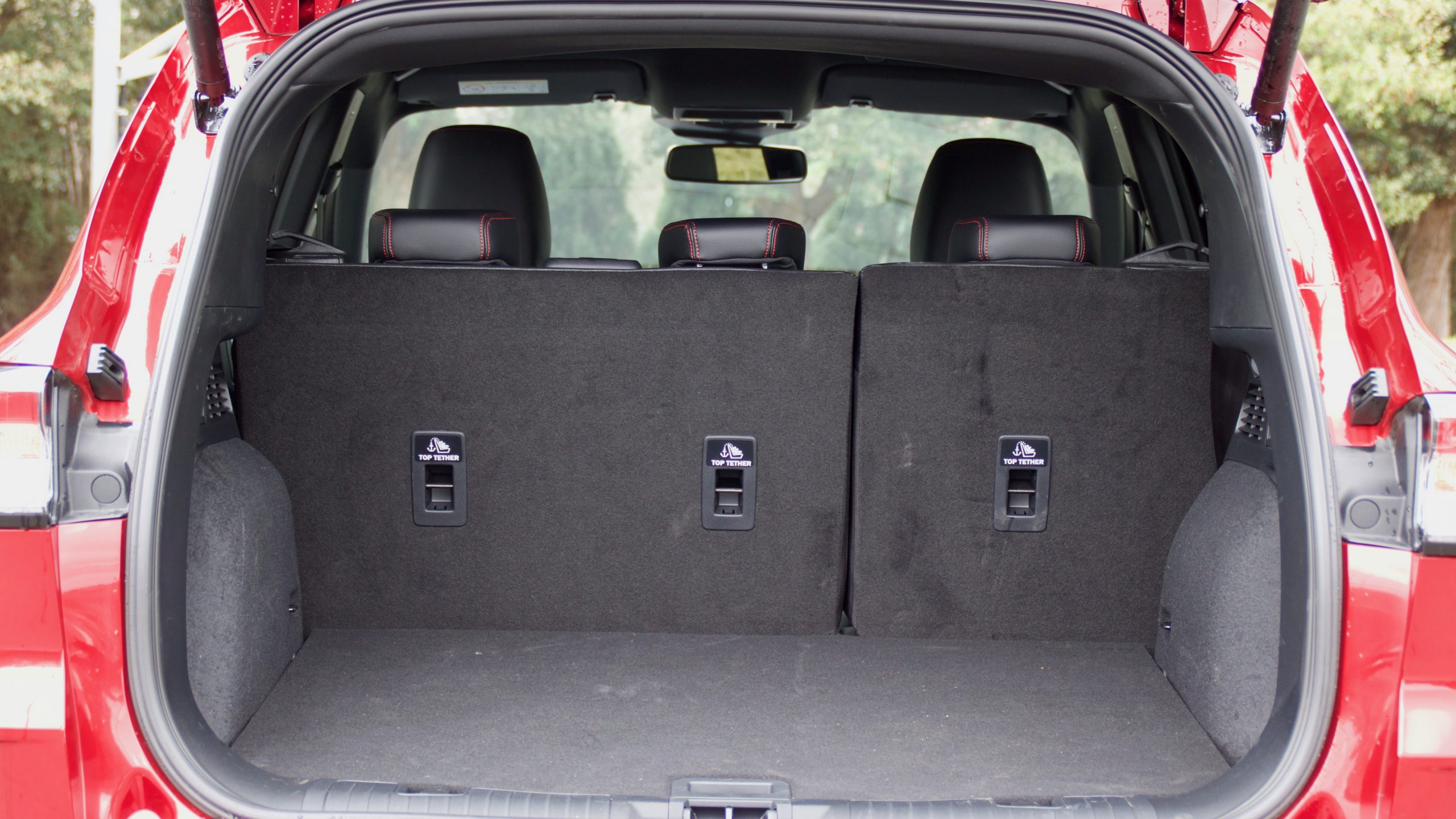
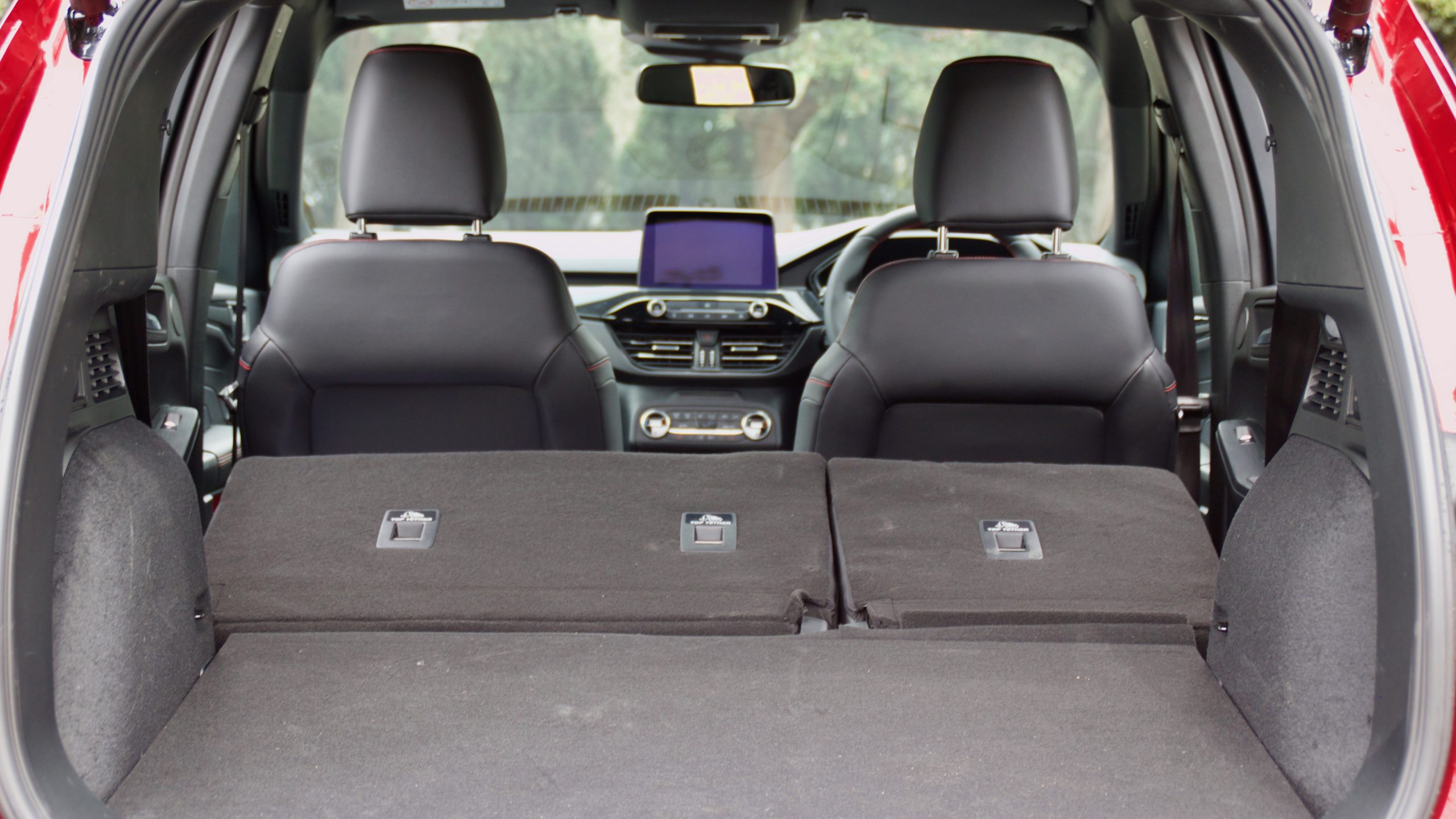
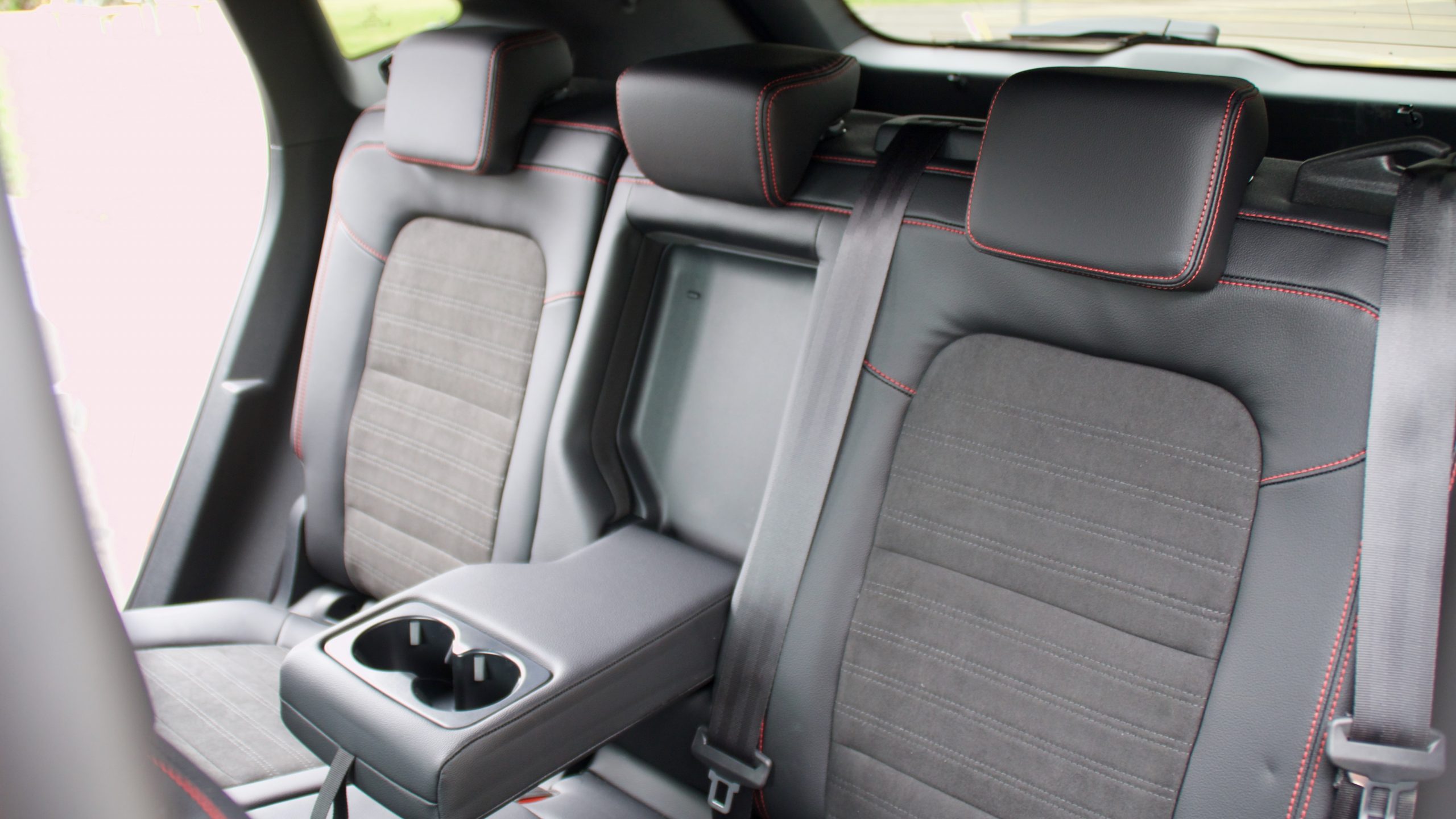
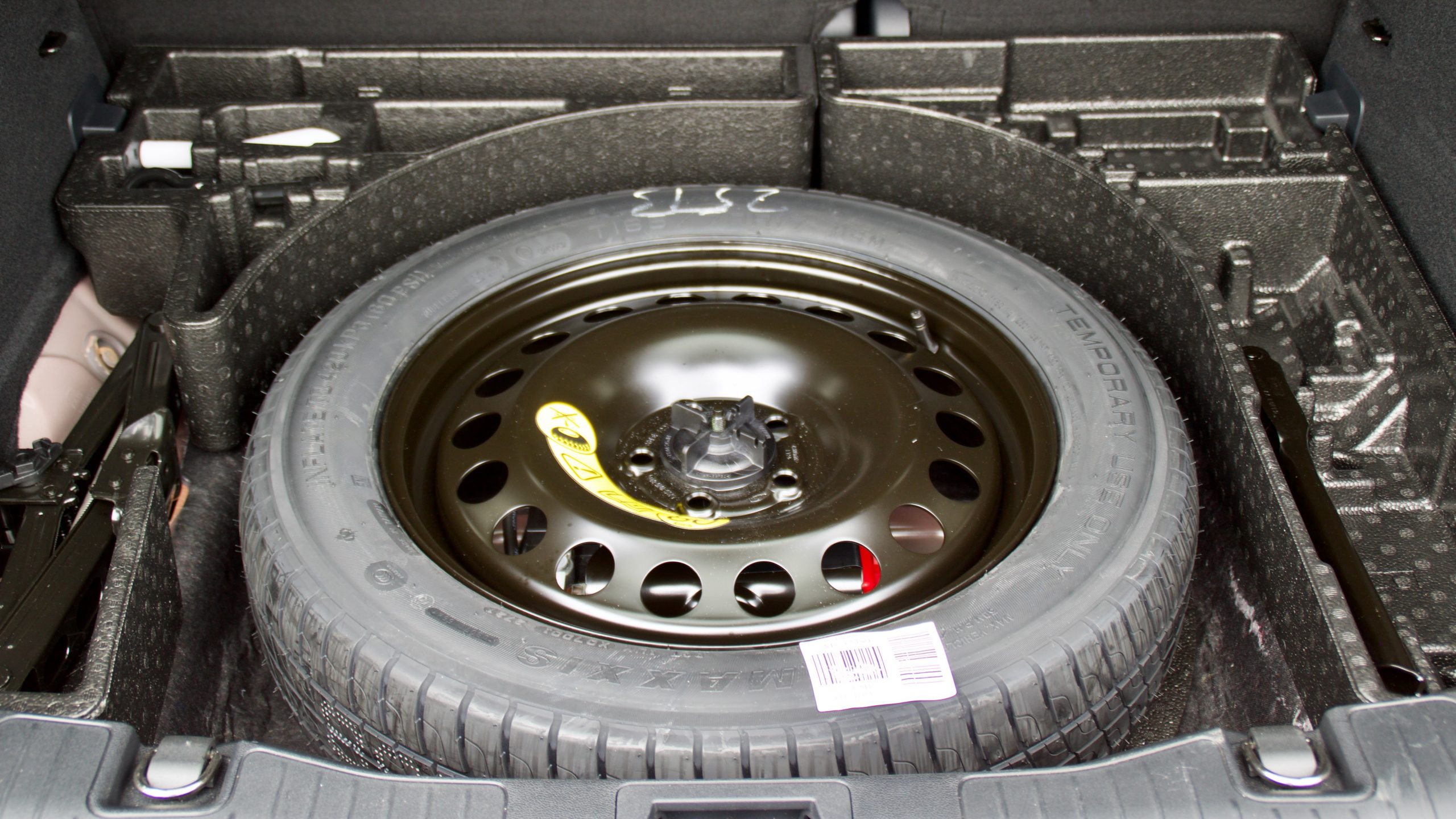
The boot of the Escape measures a healthy 556-litres with the seats up and 1,478L with the seats folded. The floor is at a nice height for loading heavy items, while there’s also side storage and releases to fold the seats. Under the boot floor is a space-saver spare wheel, which is very rare for a part- or fully-electrified car in Australia.
Service & Warranty: 9/10
Like other Ford products in Australia, the 2022 Ford Escape ST-Line PHEV is covered by a five-year/unlimited km warranty with up to eight years of roadside assistance and an eight-year/160,000km warranty for the battery. Its service intervals are once-yearly/every 15,000km, and the first five years/75,000km of servicing costs $1,571 ($371 per service).
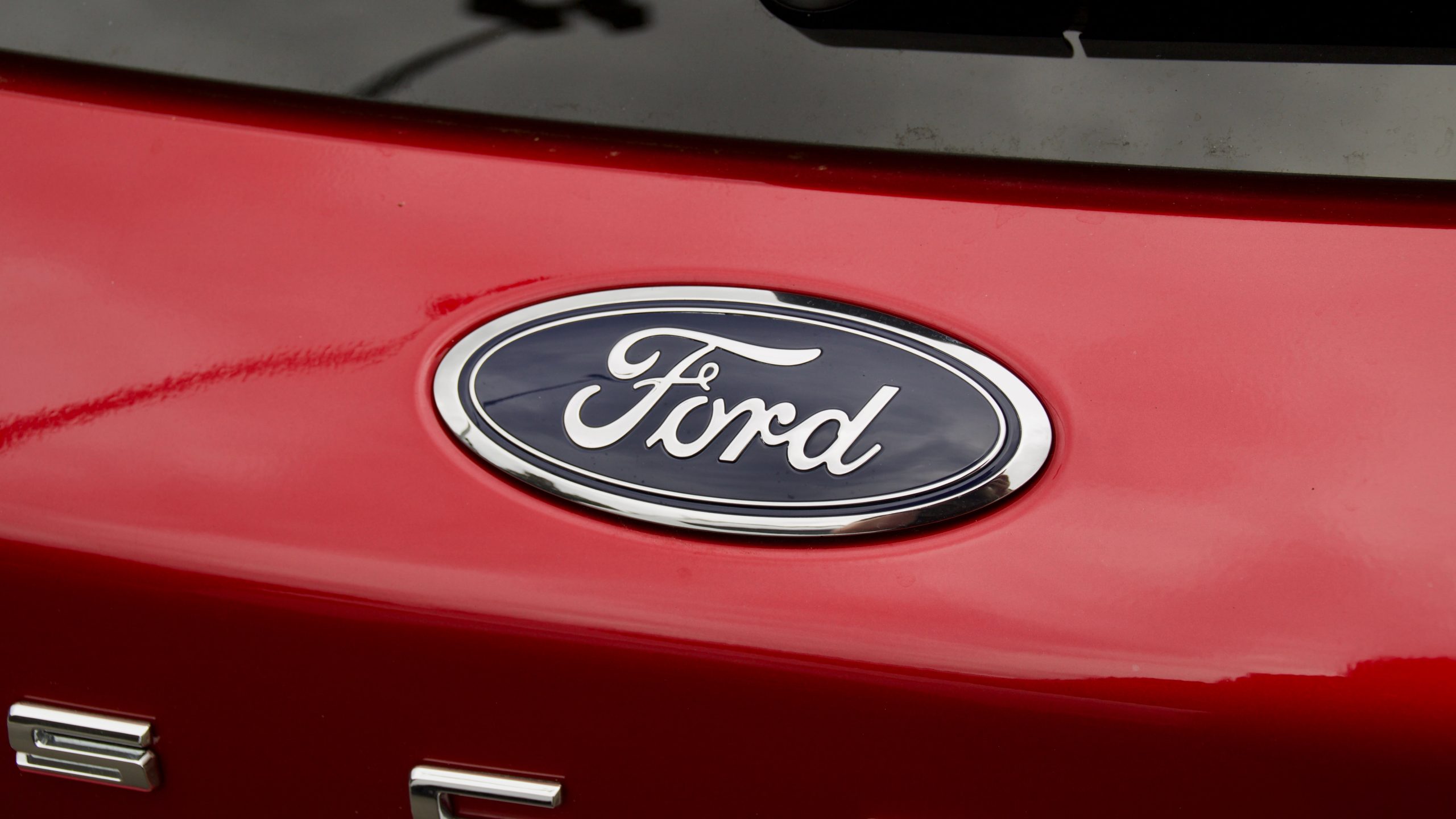
Over at Mitsubishi, a five-year/100,000km warranty is standard but owners can receive up to 10 years’/200,000km warranty if their car is serviced at a dealership – the battery has an identical eight-year/160,000km warranty to the Ford. Five years/75,000km of servicing costs slightly less at $1,495 ($299 per service), though you only get up to four years of roadside assistance.
The 2022 Ford Escape ST-Line PHEV DiscoverAuto Rating: 7.8/10
What’s clear about the 2022 Ford Escape ST-Line PHEV is that regardless of its drivetrain, it’s a well rounded mid-size SUV that should be selling a lot better than it currently is. It offers a good quality and spacious cabin, fun handling, long list of standard equipment and a great aftersales package as well, while its petrol engine offers decent performance. It also proves that plug-in hybrids are good options for those wanting to reduce their emissions but aren’t ready to go fully electric.
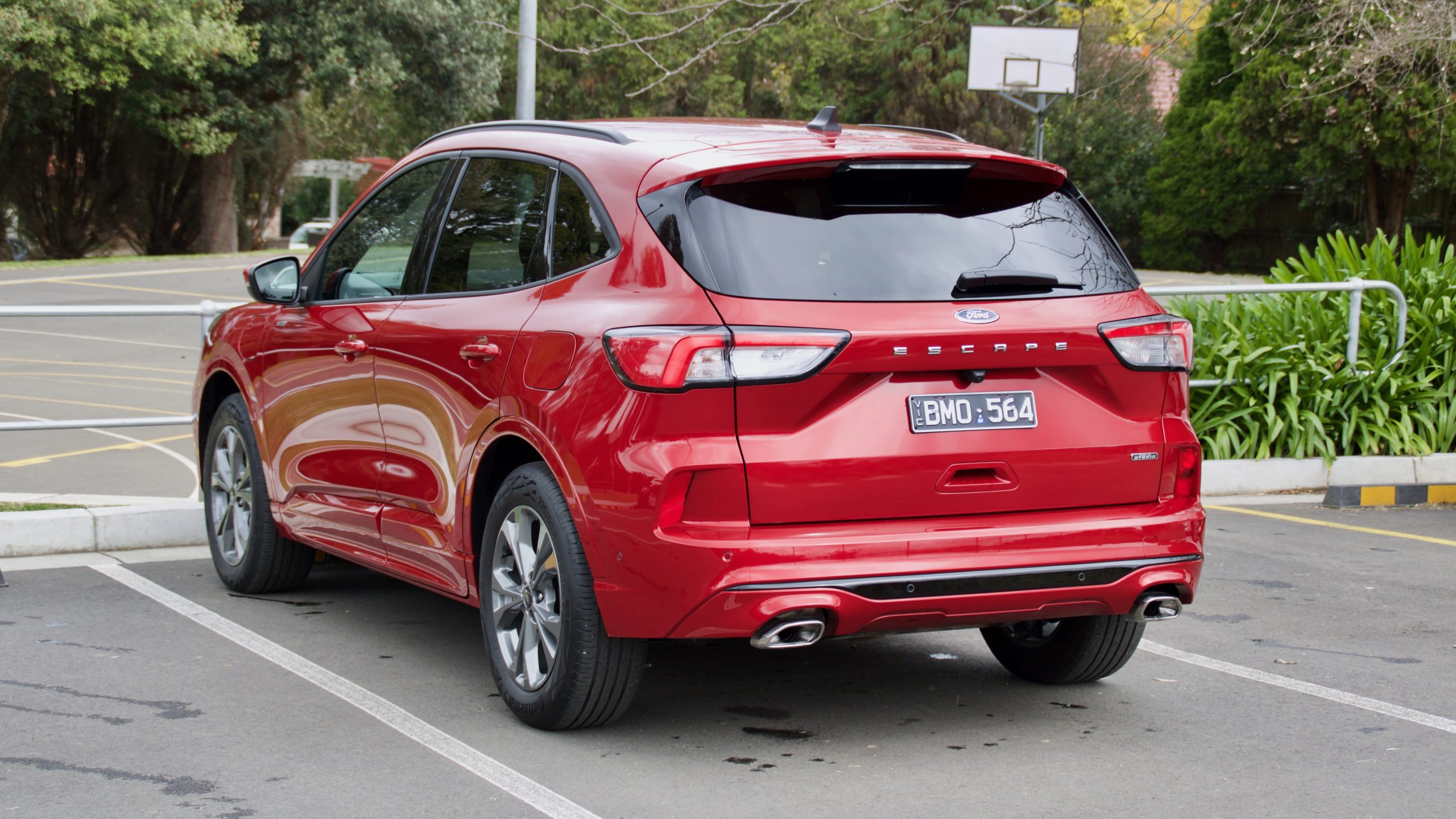
We think the Escape PEHV is definitely worth a look, but it does have issues that buyers need to investigate. The ride quality is noticeably worse than the regular petrol model thanks to its heavier weight, the interior is starting to feel a bit dated – the incoming mid-life facelift will fix this, however – and while the all-electric range is pretty good, its maximum charging speed of just 7.4kW is slow. Overall, we think a Mitsubishi Outlander PHEV is a better option, but the Escape is still a good all-rounder worth consideration. Plus, we think there should be more plug-in hybrids on offer as for some, they’re great.
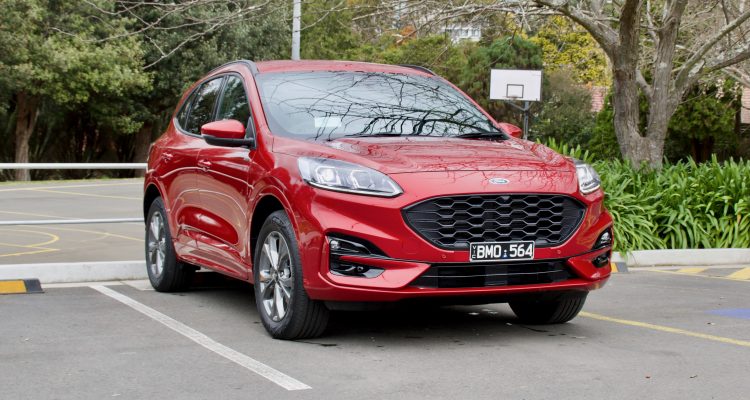
Leave a Reply